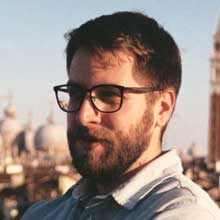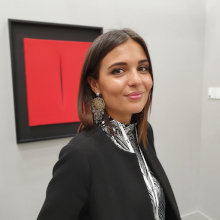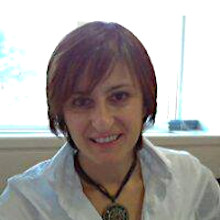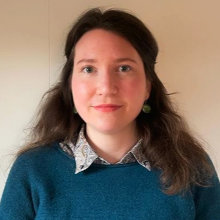AdriArchCult
Architectural Culture of the Early Modern Eastern Adriatic
About
Between the 15th and 18th century the Eastern Adriatic, partitioned between Venetian and Dubrovnik Republics, the Kingdom of Hungary-Croatia and Habsburg and Ottoman Empires, was politically transformed into a vast archipelago, including mainland coastal towns divided from the hinterland. This process triggered the formation of a fluctuating and floating architectural market functioning within a multilingual and multiconfessional context.
The aim of the AdriArchCult project is an overall study of the architectural culture of the region, examining its political, religious, cognitive and practical sphere, and thus overcoming the divisions of historiographies in different languages and traditional approaches based on the national or center/periphery paradigm. The result will be an innovative and dynamic vision of the architectural production of a region that connects the various faces of European culture.
Main research domains
1) Territorialization
The political presence on the territory is analyzed using the most common medium for dividing the space and creating boundaries: architectural production. The research of the specific symbolic values and functional needs of different buildings will contribute to the understanding of architecture as the strategy of the political presence.
The research will analyze the material presence of the buildings and the processes of negotiation between the local communities and the different ruling powers in order to define the strategies of differentiation applied by these powers.
2) Religious sphere
The dynamic multi-confessional sphere was comprised of an existing dialogue with Orthodox Christians and the Jews, new everyday contact with Islam through the presence of the Ottomans, and the echoes of the Reformation. This religious diversity triggered oscillations between coexistence and conflict.
The Catholic revival and confessionalization of the powers generated intense building activities.The main focus is to understand how the cohabitation of different powers and their interests, supported by the Counter-reformation, and the different religious needs of commissioners, resulted in complex architectural outcomes.
3) Peripatetic of knowledge on architecture
The intellectual sphere of architecture in the Eastern Adriatic archipelago was shaped by Europe-wide processes, in which it actively participated. Supported by the pan-European revival of antiquity, the architectural production in the area was also largely shaped by intense intellectual activities. The circulation of knowledge for both patrons and artists depended on the mobility of ideas, expressed visually and verbally.
Therefore, the role of the printed book market in molding the dialogue between professionals and patrons in the multilingual reality of the Adriatic rim will be explored.
4) Architectural practice
The construction sites along the Eastern Adriatic Coast represented a wide network of a shared specialized workforce, materials, practices and technology, as well as construction site organization, within which a balanced market for architectural goods was formed.
The main objective is to reveal and define the agents of the exchange and commerce, together with a system of exploitation of goods, in order to understand the internal mechanisms of the architectural production in the Eastern Adriatic.
Activities
The project activities comprise:
- Events - ERC dissemination and communication meetings organised in Venice at Ca' Foscari premises with the presence of international experts as speakers
- Workshops and seminars - research meetings of the ERC members and external experts
- Colloquia - periodic deep research discussions of the ERC members
- On-site seminars - research visits of the ERC members to the architectures in Venice
- Conferences - participation of the ERC members in congresses and conferences to disseminate the ERC research results
- Field research - prolonged research visits to study sites in the Eastern Adriatic (Croatia and Italy)
Events
08/06/2022 - The Renaissance in the Adriatic territories of the Kingdom of Naples
|
|
The Renaissance in the Adriatic territories of the Kingdom of Naples
Bianca De Divitiis - University of Naples Federico II |
449 KB |
Bianca De Divitiis (University of Naples Federico II) held the fourth ERC AdriArchCult project workshop of the 2022 series, presenting her paper “The Renaissance in the Adriatic territories of the Kingdom of Naples”. She focused on the cultural connections between the two rims of the Adriatic, with particular attention for the Adriatic territories of the Kingdom of Naples. These territories were characterized by a certain distance from the capital Naples, from which they were separated by the Apennines while remaining open to other realities both to the north and to the eastern Adriatic and the Islamic world of the great Ottoman Empire. The lecture looked at the specific features of the Renaissance in these territories, partly connected with the rest of the Kingdom, but at the same time subject to different and heterogeneous influences, which determined its autonomous and alternative character.
The conference was followed by discussions and, the day after, by an insight seminar with the AdriArchCult team members in which De Divitiis answered questions providing important research suggestions.
26/05/2022 - Another Renaissance: Art Between Two Worlds c. 1500
|
|
Another Renaissance: Art Between Two Worlds c. 1500
Alina Payne - Villa I Tatti, The Harvard University |
530 KB |
For the third 2022 ERC AdriArchCult project workshop, Alina Payne (Villa I Tatti, The Harvard University) presented her paper “Another Renaissance: Art Between Two Worlds c. 1500”. Arising from the forthcoming volume The Land Between Two Seas, the talk looked at Eastern Europe — from the Adriatic all the way to Poland and Lithuania — and its interaction with the larger Mediterranean artistic and cultural melting pot in the early modern period. Connected by strong riverine ties to the seas of the Mediterranean system (from the mare nostrum itself through the Sea of Marmara, the Black Sea and the Sea of Azov), this hinterland raises questions about center and periphery, hybridity, and the sites of artistic innovation. Focusing on a cathedral in Wallachia (c. 1512-1517), Payne explored this liminal zone mediating between Western Europe and Central Asian cultures that is now essentially lost in a twilight space of “Byzantium after Byzantium”. Yet, this territory “between two worlds” had an identity of its own, fluid and unstable and therefore more flexible and elastic in art, manners, tastes and even faiths. The conference was followed by discussions.
The day after, Alina Payne held an insight seminar with the AdriArchCult team members, answering questions and providing research suggestions.
14/04/2022 - Interregionalità nella cultura architettonica dei Gesuiti – Gorizia, Trieste, Rijeka e Dubrovnik
|
|
Interregionalità nella cultura architettonica dei Gesuiti – Gorizia, Trieste, Rijeka e Dubrovnik [ITA]
Richard Bösel - Istituto Storico Austriaco di Roma |
458 KB |
The architecture built in the early modern period by religious orders must be validated as an expression of a culture that has developed in a universalistic, coherent and potentially free from space and time institutional context. Although it was not autonomous and much less uniform in its typological and stylistic manifestations, it was nevertheless conditioned by the organizational structure and the intellectual connections that existed in the community of religious. Its own tradition and the use of the same affiliates in construction sites throughout the area contributed to the formation of a distinctly 'interregional' architectural reality. The Jesuit buildings of Gorizia, Trieste, Rijeka and Dubrovnik represent the eloquent testimonies of this phenomenon.
17/03/2022 - Architecture and Invention in the Veneto in the Cinquecento
Most studies of Early Modern architecture in the Veneto focus on villas, palaces and churches. Yet recent research by economic historians has drawn attention to the striking fact that many of Palladio’s patrons were actively engaged in commerce and manufacturing. Meanwhile, hundreds of applications for patents for new inventions of machinery passed through the Venetian Senate, underpinning this remarkable technological revolution. The lecture will discuss the speaker’s new book, "L'Architettura protoindustriale del Veneto nell’età di Palladio" (Officina Editore, 2022), which highlights a neglected sector of the architectural heritage of the Veneto. How were these protoindustrial activities inserted into the spatial environment in both town and country, and how did they transform the landscape?
|
|
Architecture and Invention in the Veneto in the Cinquecento
Deborah Howard - University of Cambridge |
867 KB |
18/06/2021 - The Building History of Early Modern Rome
At the end of the sixteenth century, Roman construction practices reached the peak of a centuries-old process of technical-operational improvement, which had remained unsurpassed for a long time. Founded on the strategic coordination of qualified workers, this practice made use of very effective methods of procurement and transport of materials, as well as of scaffolding and work machines that allowed the successful contraction of the financial commitment and the direct transfer of a precious operational knowledge in a long course. The Fabbrica di San Pietro in Vaticano, the first workshop of the art of building in Rome, put in place a capillary work of assistance to other construction sites, public and private, reflected both in the supply of materials and equipment, and in the decisive contribution of its highly qualified workers. The Fabbrica embodied an undisputed authority for a long period and controlled all major building interventions conducted up to the unification of Italy, in the city of Rome and in the entire Papal State.
|
|
The Building History of Early Modern Rome
Nicoletta Marconi - Tor Vergata University of Rome |
824 KB |
11/06/2021 - The Building History of Koper cathedral
The Cathedral of the Assumption of the Blessed Virgin Mary in Koper is almost entirely the work of Giorgio Massari (1687-1766), the leading Venetian architect of the mid-18th century. Already at the time of bishop Paolo Naldini (1632-1713) the idea of renewing the Romanesque basilica began to be considered: the first project for the new presbytery was commissioned in 1690, but the construction began only in 1720. Massari enters the construction site in 1738 with the project for the church aisles. The seminar will present the various questions related to the construction process and the organization of the site during the period between 1690 and 1749, underlining its significance for the development of the other Istrian and Friulian construction sites of the period.
|
|
The Building History of Koper cathedral
Helena Seražin - France Stele Institute of Art History ZRC SAZU, Ljubljana |
340 KB |
30/04/2021 - Daniele Barbaro: In and Beyond the Text and Thinking 3D Projects
The International Network Daniele Barbaro: In and Beyond the Text (2010-16) put this protagonist of the cultural life of 16th-century Venice under the lens of his writings, and adopting a cross-disciplinary approach provided a reassessment of his figure in the context of the European Renaissance. Thinking 3D (2015-20) was centred on the developments of the techniques used to communicate 3-dimensional forms in 2-dimensional media, focussing in particular on earlymodern printed books. Both projects were based on collaborative research and resulted in exhibitions, public talks, and academic symposia.
|
|
Daniele Barbaro: In and Beyond the Text and Thinking 3D Projects
Laura Moretti – University of St Andrews |
2 MB |
16/04/2021 - Antonio da Sangallo the Younger’s Annotated Architectural Books
The practice of a leading architect such as Antonio da Sangallo the Younger (1484-1546) was grounded upon a great share of pragmatism, an attitude which affected also the avid study of at least four annotated editions of Vitruvius’s De Architectura. The seminar deals with the way Antonio reads and interprets (or misinterprets) the Latin text especially in those parts related to the descriptions of monuments that he could compare with the visible ruins, often offering different solutions. The discrepancy between the text and the artefact led him to find solutions to be used in his design process.
|
|
Antonio da Sangallo the Younger’s Annotated Architectural Books
Francesco Benelli – Alma Mater Studiorum Università di Bologna |
632 KB |
9-16-30/04/2021 - Architecture and the Early Modern Books
- 9 April 2021 - The ERC EMoBookTrade Project, Angela Nuovo – University of Milan
- 16 April 2021 - Antonio da Sangallo the Younger’s Annotated Architectural Books, Francesco Benelli – University of Bologna
- 30 April 2021 - Daniele Barbaro: In and Beyond the Text and Thinking 3D Projects, Laura Moretti – University of St. Andrews
|
|
Poster | 495 KB |
09/04/2021 - The ERC EMoBookTrade Project
For the first seminar of the series "Architecture and the Early Modern Books", three members of the ERC project EMoBookTrade (PI Angela Nuovo, Università di Milano, 2016-2021) presented the outcomes of their research. The project aims to look for new ways to assess the impact of printed books on society, or the effect of the so-called Printing Revolution, investigating the early modern book trade in different aspects. Andrea Ottone showed the database of the Early Modern Book Prices and explained the translation of sales catalogues or book inventories into digital sources. Renaud Milazzo pointed out how prices are a game-changing factor in the book trade, with a focus on the place of architectural books in the early modern market. Erika Squassina dealt with the legal frame of the book trade and illustrated the database of Early Modern Book Privileges in Venice. The passionate debate that followed focused mainly on the common ground of the two ERC projects, i.e. architectural books and their role in the early modern society.
|
|
The ERC EMoBookTrade Project
Angela Nuovo – University of Milan. With the collaboration of Andrea Ottone and Erika Squassina – University of Milan. |
427 KB |
29/01/2021 - Nazionalismi storiografici in storia dell’arte ed architettura
The second ERC AdriArchCult project workshop has gathered several experts in a discussion on the presence of the national narratives in the historiography. Jasenka Gudelj, Marta Nezzo and Sarah Lynch have presented three case studies as introduction to the discussion, which followed by the lively engagement of the numerous participants. The common line to all three presentations was related to the mechanisms of interpretation of the artistic and architectural production in a nationalistic perspective. They reflected upon the past and present scholarship in which the cultural production was used to reinforce a national narrative, or it was interpreted as the expression of a national identity.
The workshop also provided the guidelines for a more conscious theoretical and methodological approach to the uses and abuses of the national narratives in the art-historical and architectural scholarship. This was extremely important considering that, as emerged clearly from papers and discussion, nationalism has been deeply rooted into art and architectural history since the very beginning. Finally, workshop ended debating how even two seminal narratives of the discipline, such as Vasari and the late nineteenth century German scholarship, were strongly influenced by a nationalistic perspective.
22/01/2021 - Temi e problemi della storia dell’architettura veneziana dell’epoca moderna negli ultimi vent’anni
The team pursued the training on the historiography listening the most recent trends in Venetian architectural history directly from its protagonists. In this workshop Martina Frank, Elena Svalduz, Fulvio Lenzo, and Gianmario Guidarelli spoke about their own research fields while, in the second instance, debated those research projects and study groups that are cutting the edge.
From the lively and passionate dialogue, moderated by Jasenka Gudelj, many fruitful suggestions emerged on how originally investigate Venetian architecture: the multiple perspective, from different points of view and disciplines; the analysis at different scales, from urban transformations to altar design; the comparative study, combining Venice’s specificities with transversal issues; the topic of mobility, considering Venice as a place of transit and confrontation for people and ideas.
05/11/2020 - ERC online project presentation to the staff of Ca’ Foscari International Research Office
The team presented the project to the staff of the Ca’ Foscari International Research Office.
Jasenka Gudelj presented the general description of the project – its goals, phases, and outcomes – whereas Post-Docs and PhD Students held three-minute presentations on their research involvement within the AdriArchCult project.
Workshops and seminars
17/11/2023 - ERC AdriArchCult Round table - Public Architecture of the Early Modern Eastern Adriatic
ERC AdriArchCult Round table on Public Architecture of the Early Modern Eastern Adriatic with discussants: Ivan Alduk (Ministry of Culture and Media of the Republic of Croatia), Giuseppe Andolina (Ca’ Foscari University of Venice), Irena Benyovsky Latin (Croatian Institute of History), Laris Boric´ (University of Zadar), Donal Cooper (University of Cambridge), Martina Frank (Ca’ Foscari University of Venice), Cristiano Guarneri (Ca’ Foscari University of Venice), Jasenka Gudelj (Ca’ Foscari University of Venice), Neven Jovanovic´ (University of Zagreb), David Kabalin (University of Ljubljana), Tatjana Koprivica (University of Montenegro), Nella Lonza (Croatian Academy of Sciences and Arts), Ana Marinkovic´ (University of Zagreb), Dušan Mlacovic´ (University of Ljubljana), Renata Novak Klemencˇicˇ (University of Ljubljana), Karla Papeš (Ca’ Foscari University of Venice), Petar Strunje (Ca’ Foscari University of Venice), Beatrice Tanzi (Ca’ Foscari University of Venice).
05-06/12/2022 - Digital Humanities Workshop: People of Renaissance Adriatic
PI Jasenka Gudelj and team members Ines Ivić and Cristiano Guarneri and IT specialist Tomaso Minelli, together with other AdriArchCult team members (Laris Borić, Ana Marinković, Karla Papeš, Giuseppe Andolina, Beatrice Tanzi) participated in the Digital Humanities Workshop "People of Renaissance Adriatic", organized by Stefan Sander Faes (University of Bergen) at University of Bergen with the participation of Filip Malešević (University of Fribourg), Ana Plosnić (Institute of Art History, Zagreb), Nicolò Villanti (University of Duisburg-Essen), Lena Sadovski-Kornprobst (University of Vienna) and Andrew Pettegree (University of St. Andrews). The group of invited international specialist on the early Modern Adriatic and digital humanities discussed the process of database configuration and collaboration and data sharing possibilities.
01/10/2022 - ERC AdriArchCult: Digital Network Workshop
PI Jasenka Gudelj and team members Ines Ivić and Cristiano Guarneri and IT specialist Tomaso Minelli with the participation of AdriArchCult team (Giuseppe Andolina, Laris Borić, Martina Frank, Neven Jovanović, Ana Marinković, Karla Papeš, Beatrice Tanzi) presented the AdriArchCult database, while Valentina Sapienza (Ca’ Foscari, Venice) presented the Garzoni project database. The group of invited international specialist on the early Modern Adriatic and digital humanities - Stefan Sander Faes (University of Bergen), Francesco Bettarini (Bocconi University Milan), Fabian Kümmeler (Austrian Academy of Sciences), Filip Maleševic´ (University of Fribourg), Ana Plosnic´ (Institute of Art History, Zagreb), Valentina Sapienza (Ca’ Foscari University Venice), Nicolò Villanti (University of Duisburg-Essen) - discussed the process of database configuration and collaboration and data sharing possibilities.
18/03/2022 - Early Modern Spaces of Production between the Veneto and the Adriatic Rim, with Deborah Howard (University of Cambridge)
Continuing the lecture “Architecture and Invention in the Veneto in the Cinquecento” on March 17, the team had once again the pleasure to host Deborah Howard (University of Cambridge) in the first ERC AdriArchCult seminar of 2022, as well as seminar attendees, PhD students Giulia Gelmi (Ca' Foscari University of Venice) and Nicolas Moucheront (Università Iuav di Venezia). P. I. Jasenka Gudelj opened the seminar “Early Modern Spaces of Production between the Veneto and the Adriatic Rim”, which focused on the main research domains of the project: territorialization, religious sphere, peripatetic of knowledge on architecture and architectural practice. Post-docs Cristiano Guarneri and Ines Ivić, PhD students Beatrice Tanzi, Giuseppe Andolina and Karla Papeš, visiting researcher Tamsin Prideaux and the guests had the opportunity to present their research problems to Deborah Howard, and in the succeeding discussion, by comparing methodologies and experiences, to pave the way for answering their research questions and to create new ones.
26/02/2021 - Historiography Seminar: the History of the Eastern Adriatic Architecture
In a new meeting the team continued exploring the scholarship and debating the historiographical problems on the early modern Eastern Adriatic literature, art, and architecture. With the format ‘Adopt a historian’, where each member analysed the works by a different scholar, the team is able to discuss the scholarship in a comparative perspective. In this round, Phd students and Postdocs devoted their attention to Petar Kolendić, Igor Fisković, Emil Hilje, Ivan Matejčić, and Joško Belamarić, with short presentations followed by arguments by senior members.
15/01/2021 - Historiography seminar: The history of the Eastern Adriatic architecture
Under the guidance of the project PI, Jasenka Gudelj, the PhD students and postdocs have continued exploring the relevant scholarship and the historiography related to the project's theme – the architectural production on the Eastern Adriatic Coast. Adopting a comparative approach, the team has discussed the works by Radmila Matejčić, Ana Deanović, Kruno Prijatelj, Nada Grujić, and Vladimir Marković. Laris Borić, the external member of a team from the University of Zadar, has joined the meeting and contributed to the discussion with his expertise.
08/01/2021 - Historiography seminar: the history of Venetian architecture. Themes and problems
The team continued the activities with the seminar on the most relevant Italian and Croatian scholarship.
This week’s historiography seminar was dedicated to the scholars focused on the history of Venetian architecture.
Among the selected readings were Manfredo Tafuri, Ennio Concina, Elena Bassi, Egle Renata Trincanato, and Lionello Puppi.
Prof. Marina Frank has joined the meeting and contributed the fruitful discussion with her knowledge, reflecting upon the ongoing research problems related to Venetian architecture.
11/12/2020 - Valentina Sapienza (Ca’ Foscari): presentation of Garzoni project
The team had a pleasure to welcome Valentina Sapienza who presented the project Garzoni: "Apprenticeship, Work, Society in Early Modern Venice (16th-18th centuries)".
The details on the project are available on the website https://garzoni.hypotheses.org.
26/11/2020 - Historiography seminar: Italian and Croatian scholarship of the 20th century
The research team, the post-docs and PhD students have engaged into the comprehensive discussion on the approaches of the national historiographies, Croatian and Italian one.
The biographies, bibliographies, the research interests and the methodological approaches of the following historians were presented and discussed: Giuseppe Praga, Alessandro Dudan, Cvito Fisković, Radovan Ivančević, and Giuseppe Maria Pilo.
19/11/2020 - Historiography seminar: the traditions and historiographical problems
The project PI, Jasenka Gudelj, opened a series of the historiography seminars with the reflections on the 20th century scholarship dealing with the architectural and artistic production in the Eastern Adriatic Coast, underlining the general problems which will be tackled during the duration of the project.
16/10/2020 - Historiography seminar: the problems of centre and periphery
The team members have discussed the historiographical and the methodological approaches of “centre-periphery” concept based on the readings by Ljubo Karaman "Problemi periferijske umjetnosti" (The problems of peripheral art) and those by Enrico Castelnuovo and Carlo Ginzburg "Centro e periferia nella storia dell'arte italiana".
Colloquia
30/10/2022 - Research colloquium: Ines Ivić
The post-doc fellow, Ines Ivić, presented the progress report on her research topic “The architectural practices in the early modern Eastern Adriatic”. The report was divided in three parts: the presentation of the book outline on the architectural practices in Dubrovnik after the Great Earthquake of 1667, the presentation of the current portion of research on legal and administrative framework of renovations, and the discussion. Péter Farbaky, Fabrizio Nevola and Giuseppe Bonaccorso shared their comments and suggestions, together with the other members of the project team.
21/01/2022 - Research Colloquium: ERC AdriArchCult Study Day
The team members joined together for the first study ERC AdriArchCult Study Day to present their research during the first year of the projectand discuss specific aspects, questions, and problems related to their research activities. The meeting was held in the hybrid form, with the members participating on-site at the Ca’ Foscari University and joining via an online platform.
The first part of the day was reserved for the expositions by Neven Jovanović (University of Zagreb) who presented “How to build a humanist Latin vocabulary of architecture using Adriatic sources”, Giuseppe Andolina (Ca’ Foscari University of Venice, PhD student) “Negoziazione e imposizione nelle politiche territoriali veneziane sulla Dalmazia del Quattrocento tra edilizia pubblica e statuti civici”, Jasenka Gudelj “Giorgio Dalmata’s Networks” (Ca’ Foscari University of Venice, project PI), Daniele Pelosi (Ca’ Foscari University of Venice, PhD) “Domandesu Juraj Kožičić Benja”, Laris Borić (University of Zadar) “Understanding the architectural oddities in Dalmatian Cinquecento: Does the Karaman’s concept of “provincial-peripheral“ in the interpretation of aberrations and deviations from the standardized visual codes contain traces of self-colonizing practice?”, and Karla Papeš (Ca’ Foscari University of Venice, PhD student) “Centres of the Early Modern Fortification Knowledge”.
During the afternoon session, Ana Marinković (University of Zagreb) presented her research “Lay authorities’ control of the liminal zones of religious enclosure and their interaction with public space (on the examples from 15th/16th c. Dubrovnik)”, Beatrice Tanzi (Ca’ Foscari University of Venice, PhD student) “Agostino Valier e la visita nell’Adriatico Orientale: un primo resoconto”, Elvis Orbanić (Institute for Historical and Social Sciences of the Croatian Academy of Sciences and Arts in Rijeka - Regional Unit in Pula) “Visite pastorali nel pisinese del Settecento quali fonti per la storia dell’architettura”, Ines Ivić (Ca’ Foscari University of Venice, post-doc fellow) “Architectural practice in the Early Modern Dubrovnik”, Cristiano Guarneri (Ca’ Foscari University of Venice, post-doc fellow) “Circulation and Use of Architectural Books in the Eastern Adriatic”, Martina Frank (Ca’ Foscari University of Venice) “Lo spazio residenziale sei-settecentesco tra Venezia e il Dominio - domande sul metodo”.The discussion, suggestions, and questions by team members followed after each presentation.
22/11/2021 - Research colloquium: Cristiano Guarneri
The post-doc fellow, Cristiano Guarneri, presented the progress report of his research project “The circulation of the architectural knowledge in the early modern Eastern Adriatic”, showing the preliminary results and discussing his conclusions with the project team.
12/11/2021 - Research colloquium: Ines Ivić
The post-doc fellow, Ines Ivić, presented the progress report on her research topic “The architectural practices in the early modern Eastern Adriatic” focusing on the methodological approach and the digital tools developed for the research analysis.
07/10/2021 - PhD Research Colloquium: Karla Papes, Giuseppe Andolina, Beatrice Tanzi, Daniele Pelosi
The PhD students, Karla Papeš, Giuseppe Andolina, Beatrice Tanzi, and Daniele Pelosi have presented the present state of their PhD research.
18/12/2020 - Research colloquium: summary of the research activities during the first period
The last research seminar of 2020 was dedicated to the short presentations of the progress of each of the team member, followed with the general outline of the forthcoming research activities.
27/11/2020 - Research colloquium: Daniele Pelosi
Daniele Pelosi held online presentation on his research "Styles, models and iconographies through Rome and the Adriatic. Identity and contexts in the patronage of the «Cardinale di Senigallia» Marco Vigerio (1505-1516)".
Valentina Sapienza, Daniele Pelosi’s supervisor joined the meeting.
The discussion followed.
20/11/2020 - Research colloquium: Giuseppe Andolina
Giuseppe Andolina held online presentation on his research "Early Modern Territoriality and Venetiatization: urban changes and public buildings in the Eastern Adriatic. Architettura pubblica in Istria e Dalmazia del XV secolo".
Laris Borić (University of Zadar), the senior member of research team, joined the online meeting and participated in the discussion on the subject.
The discussion followed the presentation.
12/11/2020 - Research colloquium: Beatrice Tanzi
Beatrice Tanzi held online presentation on her research "La visita apostolica di Agostino Valier (1579-1583). Una ricerca sulle emergenze architettoniche e artistiche n Dalmazia e in Istria dopo il Concilio di Trento".
Ana Marinković (University of Zagreb) and Elvis Orbanić (Institute for Historical and Social Sciences of the Croatian Academy of Sciences and Arts in Rijeka - Regional Unit in Pula) the senior members of research team joined the online meeting and shared their expertise on the subject.
The discussion followed the presentation.
29/10/2020 - Research colloquium: Karla Papeš
Karla Papeš held online presentation on her research "Military architecture between theory and practice in the Early Modern eastern Adriatic".
The presentation was followed by a discussion.
23/10/2020 - Research colloquium: Ines Ivić and Cristiano Guarneri
Ines Ivić held online presentation of her research outline on the topic "Libro della Fabbrica" as a source for the history of construction and architecture in the Eastern Adriatic Coast, while Cristiano Guarneri presented his research topic "Circolazione del sapere architettonico lungo la costa orientale dell’Adriatico nella prima età moderna", followed by a discussion.
06/10/2020 - Kick-off meeting at Malcanton Marcorà
Participants: Jasenka Gudelj, Silvia Bellacicco, Giuseppe Andolina, Cristiano Guarneri, Ines Ivić, Karla Papeš, Beatrice Tanzi
On October 6th 2020, the AdriArchCult ERC-CoG n. 865863 research team had its first official meeting in the Aula Biral, Malcanton Marcorà campus. The principal investigator, prof. Jasenka Gudelj presented the project’s general description, the timeline of the research activities, and the short-term and the long-term goals of the five-year project, while the project’s coordinator Silvia Bellacicco reflected upon its administrative framework. The meeting was an excellent opportunity for the researchers participating in the project to introduce themselves to their peers, giving a short presentation of their own research interests and the themes they will explore during the next few years. The three PhD students, Karla Papeš, Giuseppe Andolina and Beatrice Tanzi, shortly presented their dissertation topics. Ines Ivić and Cristiano Guarneri, post-doc researchers, talked about their research on disseminating the architectural knowledge in the Eastern Adriatic Coast that they will be conducting within the general frame of the project.
On-site seminars
30/10/2020 - Venetian architecture: the Rialto zone
Participants: prof. Jasenka Gudelj, Giuseppe Andolina, Cristiano Guarneri, Ines Ivić, Karla Papeš, Beatrice Tanzi
This week's research visit concerned the Rialto area, the central Venetian market since the 11th century, where present-day buildings were mainly rebuilt after the great fires of 1505 and 1514. The first stop was the church of San Giacomo di Rialto, which, according to the legend, was founded in 421, the same year that the city of Venice was supposedly founded. The present-day architectural and urban configuration has its roots in the construction phase of 1071. Besides the church's symbolic value as the memory of the city's foundation, its architectural value lies in the fact that it was the only structure in the area that survived the great fire of 1514. Regardless of it, the Venetian Senate rebuilt the church at the very beginning of the 17th century. The church's architectural design was the subject of our on-site discussion. A simple Greek-cross plan with the central dome supported by freestanding columns became the prototype for parish churches in Venice. One of them was the church of San Giovanni Elemosinario, which we visited as one of the comparative examples of this practice.
A significant part of our on-site discussion was placed upon the square's public buildings, such as the portico, the botteghe, and the office buildings, the so-called Fabbriche Vecchie. To redeem the lost revenue, the Rialto market, as the city's leading economic force and the Republic, had to be rebuilt as quickly as possible. For that reason, in 1515, different architects submitted four projects, including a highly idealized plan – probably inspired by the Vitruvius' description of Greek forum – by the humanist architect from Verona, Fra Giocondo. The chosen project was the one by the local architect Antonio Scarpagnino, who decided to respect the former street plan. Besides the discussion on the urban development of the area and its adaptation to the geographical environment – the Fabbriche Nuove designed by Jacopo Sansovino in 1554 followed the shoreline of the Grand Canal – we have engaged in the analysis of the correlation of the architectural expression with the roles of the public offices that these buildings were housing, especially on the example of the Camerlenghi Palace, the site of the financial magistrate (Camerlenghi), projected by Guglielmo Bergamasco between 1525 and 1528.
However, it is impossible to discuss the Rialto area's importance without mentioning its emblem – the Rialto bridge. For a long time, it was the only fixed crossing over the Grand Canal until the 1850s. The original pontoon bridge was replaced at the end of the 14th century by a permanent wooden structure, which collapsed in 1450 under the weight of the crowds of spectators during the visit of Emperor Frederick III of Austria. Therefore, the bridge was rebuilt, once again in wood, whereas the present stone bridge, built by Antonio da Ponte, dates from the end of the 16th century.
To understand how commerce drove the urban and architectural development of the area, we visited the Fondaco dei Tedeschi, the central meeting point, a warehouse, and a market for the German population and Germanic merchants in Venice. Its reconstruction between 1505 and 1508, in the form of a four-floor building organized around the central courtyard, has conditioned the development and reorganization of the whole urban area on the Grand Canal's northern side.
The last case-study of our visit was the church of the Augustinian Regular Canons – San Salvador – which served as an excellent example for identifying the dialogue between the commissioners and the architects and understanding how they interpreted the Venetian architectural heritage during the early modern period. Giorgio Spavento, a local architect, completed the church in 1534. Adopting the traditional Byzantine centralized plan, with a large central dome and four smaller domes at each corner, and multiplying it in the three joined domed structures, he created the longitudinal nave, which suited better the need of the religious order than a small centralized structure. While the transept emphasized a Latin cross plan, the three apses at the east end reflect the Veneto-Byzantine architectural tradition.
22/10/2020 - Venetian architecture: Murano, Burano, Torcello
Participants: prof. Jasenka Gudelj, Ines Ivić, Cristiano Guarneri, Beatrice Tanzi, Karla Papeš, Giuseppe Andolina, prof. Michela Agazzi
During the research visit to Murano, Torcello and Burano, we visited the church of Santa Maria and San Donato in Murano, and the churches of Santa Maria Assunta and Santa Fosca in Torcello. The main goal was the on-site discussion and the analysis of the earliest examples of the architectural production and the styles in the Venetian lagoon. The understanding of the function, the political context and the different phases of the construction of mentioned examples is necessary for understanding the development of the architectural practices in the lagoon throughout the middle ages and the early modern period. The architectural plans of these churches imitate or contain the architectural references to the most important Venetian church – San Marco – but also present the imitative model for later, an early modern architectural production which is the focal point of the project.
The seminar, and the fruitful discussion that followed, was led by prof. Michela Agazzi, an expert in the Venetian early medieval sculpture and architecture, who presented the historical and formal origins of the Venetian architecture. By pointing out and describing its models, forms, construction techniques, different phases and stratifications, the research group has questioned the position of these monuments in correlation with other coeval Venetian buildings and monuments, but also of those that were modelled upon them in different historical periods. The main goal of the visit was to distinguish different typological examples of the Venetian architecture, preserved in their early medieval and Romanesque facies.
The on-site activities consisted of the analysis of the typological characteristics found in each of the mentioned monuments, together with the identification of their individual particularities. The church of Santa Maria and Donato in Murano served as an excellent tool for the analysis of the external body of the apse area, of its formal characteristic and the present quotations of the church of San Marco. Furthermore, the attention was given to the correlation of the architecture and sculpture, preserved in the church and its facade, together with the role of the decorative elements found in the church, such as the use of the different shades of stone and the brick, or the use of the mosaics in the flooring of the church.
How to read different phases of construction and the elements that bear the characteristics of different architectural styles? The church of Santa Maria Assunta offered a good example for exploring different methodological approaches, since the main construction phases date to the eleventh and the fifteenth century. Prof. Agazzi especially pointed out the interconnection between the early medieval elements and those dated to later medieval periods. While the main focus was on the architectural features – the structure of the naves, the columns of ancient origin surmounted by elaborate Roman capitals reworked in the Middle Ages, together with the monumental mosaic on the counter façade – many other research questions were tackled on this monument related to the specific historical, chronological and historiographic issues. Furthermore, we have discussed the spatial correlation of the cathedral church with the other religious buildings in the complex, mainly the baptistery and the church of Santa Fosca, an important example of early medieval architecture built on byzantine models and characterized by a circular dome contained on an external lantern. The research trip ended with a visit to the archaeological, medieval and modern collections of the Provincial Museum of Torcello.
[Giuseppe Andolina]
15/10/2020 - Venetian architecture: St. Mark Square
Participants: prof. Jasenka Gudelj, Ines Ivić, Cristiano Guarneri, Beatrice Tanzi, Karla Papeš, Giuseppe Andolina
The first meeting of the on-site seminar ‘Venetian Architecture’ focused on the heart of the Republic of Venice: St. Mark Square. It was a perfect starting point to introduce the history, institutions, and practices of the Venetian Republic, and to have insights into its diplomatic as well as artistic relations, from Byzantium to the Eastern Adriatic. The meeting place was in front of the Porta della Carta. Together with the Arco Foscari and Scala dei Giganti, it formed an extremely significant junction point between the Doge’s Palace and St. Mark’s Church, where the Republic’s ceremonial events – such as the triumphal entrances of new doges – took place. Although the sculptor Bartolomeo Bon proudly carved his name on the architrave of the portal, generations of art historians have detected and debated the participation of Dalmatian masters, based on their characteristic manner of modeling of sculpture. For that reason, it was a good example of a case study in which the group could question the collaboration between the workshops of Dalmatian and Lombard origins widely diffused in Venice, and confront their artistic signatures.
The next steps in this research visit were the Doge’s Palace, observed through its different building phases connected with the Republic’s institutional architecture, and the St. Mark Basilica, the Doge’s church, which reflects the Byzantine origins and claims of Venice more than any other building. Both the monuments brought the material, physical evidence of the long-lasting relation with the East: the Greek marbles and the Egyptian granites on St. Mark, and the extensive use of Istrian stone in the Doge’s Palace.
Finally, the group focused on the emergence of renaissance architecture in the zone, considering the gradual sixteenth-century renovations of the buildings around the Piazza and Piazzetta. Starting from Mauro Codussi’s Clock Tower and the Procuratie Vecchie by Bartolomeo Bon, the group inspected the outstanding series of buildings by Jacopo Sansovino – the Zecca, the Marciana Library, the ‘Loggetta’, and the demolished Church of San Geminiano on the western side – ending with the Procuratie Nuove by Vincenzo Scamozzi. The architectural and constructional endeavor, conducted in less than one century, was unseen in Venice prior to this. Thus, the image and perspective of Serenissima's political, but also symbolic core, was completely transformed.
[Cristiano Guarneri]
Conferences
20-23/04/2023 - 11th Architekturtheoretisches Kolloquium - Einsiedeln
On April 21, PhD student Karla Papeš presented her research progress “Transmission of Theoretical and Practical Fortification Knowledge in the Early Modern eastern Adriatic” at the 11th Architekturtheoretisches Kolloquium in Einsiedeln, Switzerland, organized by the Stiftung Bibliothek Werner Oechslin, where it was held between April 20 and April 23.
14/04/2023 - Edifici amministrativi comunali nel Medioevo – aspetto, significato, scopo - Koper
Postdoctoral researcher Petar Strunje presented the paper "I documenti di demolizione come fonti per la ricostruzione del palazzo comunale di Spalato" on the conference on medieval public administrative buildings "Edifici amministrativi comunali nel Medioevo – aspetto, significato, scopo" held in Koper/Capodistria (Slovenia). The paper reconstructs the now-demolished communal and count’s palace of Split by confronting the demolition documents with the sources of Spalatine government organs.
23-25/03/2023 - International Conference on Fortifications of the Mediterranean Coast (FORTMED) - Pisa
On March 24, PhD student Karla Papeš presented her research progress “Fortification Inventories in the Early Modern eastern Adriatic as Research Tools” at the International Conference on Fortifications of the Mediterranean Coast (FORTMED) organized by the Department of Energy, Systems, Territory and Construction Engineering (DESTeC) of the University of Pisa. The conference was held between March 23 and March 25 at the Centro Congressi Le Benedettine in Pisa, Italy. The accepted papers were published in the Conference proceedings with ISBN, as volumes 13, 14 and 15 of the book series “Defensive Architecture of the Mediterranean”.
16/03/2023 - Venezia, Spalato e l’istituzione del Fontego dei Turchi - Venice
On the occasion of the 100th anniversary of the Museo di Storia Naturale Giancarlo Ligabue in Venice, team member Petar Strunje gave a talk on the history of the Fondaco dei Turchi – the building housing the Museum, together with Ca’ Foscari professor Vera Costantini.
10-12/11/2022 - 5th Congress of Croatian Art Historians - Zagreb
Ines Ivić presented a paper under the title "Provisions, regulations, decisions and incentives: the administrative and legal framework of Dubrovnik's reconstruction of the Great Earthquake of 1667 (Odredbe, propisi, odluke i poticaji: administrativno-pravni okvir obnove Dubrovnika nakon Velike trešnje 1667.)" at the 5th Congress of Croatian Art Historians held in Zagreb (Galerija Klovićevi dvori), organized by the Institute for Art History. The central topic of congress was the earthquakes and the renovations and preservations of cultural heritage afterwards.
11-12/10/2022 Convegno internazionale di studi. L’architettura e la scenografia per i teatri minori fra il 1750 e il 1850 - Venice
PI Jasenka Gudelj presented her paper “Teatro di Hvar/Lesina, situato nell'Arsenale” at the international conference “L’architettura e la scenografia per i teatri minori fra il 1750 e il 1850” held at the Institute of Theatre and Opera of Fondazione Cini of Venice.
29/09 – 01/10/2022 - Conference "People of the Adriatic mobility and exchange in a Venetian space (XIV-XVI century)" - Venice
PI Jasenka Gudelj presented her paper “La comunità degli Schiavoni (Dalmati) a Venezia (XV-XVI secolo)” at the international conference “People of the Adriatic: mobility and exchange in a Venetian space (XIV-XVI century)", held at Centro Tedesco di Studi Veneziani, Biblioteca Nazionale Marciana, Deputazione di Storia patria per le Venezie.
02/06/2022 - Colloque pour des jeunes chercheurs de la Renaissance/Renaissance-Kolloquium für junge Forscher - Paris
On June 2, PhD student Karla Papeš presented her research progress “The Ideal French Fortress Budget and the Early Modern Eastern Adriatic Fortifications” at the Colloque pour des jeunes chercheurs de la Renaissance/Renaissance-Kolloquium für junge Forscher organized by the Art History department of the University of Jaén, Leipzig, Würzburg and of the École Pratique des Hautes Études - PSL(HISTARA), with the support of the Université franco-allemande/Deutsch-Französische Hochschule. The conference was held between June 1 and June 4 at the Institut National d’Histoire de l’Art in Paris, France.
19-21/05/2022 - International Conference Art history and discourse on the centre and periphery – An homage to Ljubo Karaman 1886–1971 - Zagreb
The team members presented their research in sessions at the International Conference Art history and discourse on the centre and periphery organized by the Croatian Society of Art Historians between May 19 and May 21 in Zagreb, Croatia.
Cristiano Guarneri and Ines Ivić presented their paper “Different perspectives on the centre-periphery paradigm: Karaman and Castelnuovo-Ginzburg in comparison”, Giuseppe Andolina “Center vs periphery in the Stato da Mar: the public architecture and artistic production in the 15th century Eastern Adriatic”, Karla Papeš “What is the centre for the circulation of early modern fortification knowledge?”, Laris Borić “The applicability and the transformative nature of Karaman’s notions of peripheral/provincial in Dalmatian Cinquecento” and Beatrice Tanzi “The double “territorialisation/peripheralisation” of the Istrian and Dalmatian dioceses”.
13/05/2022 - 57th International Congress on Medieval Studies (ICMS) – Kalamazoo (MI)
The PhD student Giuseppe Andolina presented his paper “Textual sources and critical fortune of the sculptors of Aragonese Naples: the case of Francesco Laurana” at the 57th International Congress on Medieval Studies (ICMS) organized by the Western Michigan University in Kalamazoo (MI). The paper was presented in the panel "Reading Art and Power in Fourteenth- and Fifteenth-Century Italy". The conference was held online.
30/03-02/04/2022 - 68th Annual Meeting of the Renaissance Society of America - Dublin
The team members presented their current research in sessions at RSA 68th Annual Meeting in Dublin, Ireland on Wednesday 30 March through Saturday 2 April 2022.
The session <Architectural Culture of the Eastern Adriatic I: Constructing the Sacred Space> consisted of papers by Beatrice Tanzi "Patronage of the Missoli Family for the Benedictine Nuns on the Isle of Pag”, Karla Papeš “The Sacred Fortress: The Fortification Chapels in the Early Modern Eastern Adriatic”, Ana Marinković “The Publicness of Private Chapels in the Patrician Residences of Dubrovnik” and Ines Ivić “From Decision to Execution: The Administrative Framework of Architectural Commissions in Early Modern Dubrovnik”.
The session <Architectural Culture of the Eastern Adriatic II: Transfers and Local Responses> consisted of papers by Giuseppe Andolina “Art and Architecture in the Public Space of Quattrocento Eastern Adriatic Cities: Šibenik and Trogir”, Laris Borić “Transfer of Codussian Architectural Elements into Venetian Dalmatia: lapicida Nikola Španić in Zadar”, Cristiano Guarneri “On the Footprints of a Vitruvius Reader in the Seventeenth-Century Eastern Adriatic" and Jasenka Gudelj “The ‘Korčula Sketchbook’ and the Architectural Culture of the Early Modern Dalmatia”.
Martina Frank was the chair of the session <Architectural Culture of the Eastern Adriatic II: Transfers and Local Responses> and one of the chairs and organizers of the panel <Literary Academies and Interdisciplinary Exchange in Sixteenth- and Seventeenth-Century Italy>.
Tamsin Prideaux, visiting researcher in the framework of the ERC AdriArchCult, presented her research “Commerce and Merchant Networks in the Early Modern Mediterranean” during the session <Strangers, Friends, and Enemies: Armenian Merchant Networks and Spaces in Seventeenth-Century Venice>.
12/02/2022 - Workshop Women and Warfare in the Medieval World - online
On February 12, PhD student Karla Papeš presented her current research “A Fifteenth-Century Strategic Agreement and a Manual of War Law Written by a Woman” at the Online Workshop „Women and Warfare in the Medieval World” organized by the University of Winchester - Centre for Medieval and Renaissance Studies.
28-30/10/2021 - Conference XVII. Dani Cvita Fiskovića: Women about/in art - Imotski
The PhD student Karla Papeš presented her research “Art historian Ana Deanović and her contribution to the history of fortification architecture” at the “XVII. Dani Cvita Fiskovića: Women about/in art” in Imotski, Croatia. The conference was organized by the Department of Art History at the University of Zagreb, Faculty of Humanities and Social Sciences.
29/09-02/10/2021 - 6th Congress of Croatian Historians - Rijeka
The members of the project team presented their research in two panels organized by ERC AdriArchCult at the 6th Congress of Croatian Historians, with the Culture as the main theme. In the panel "Local and universal aspects of architectural culture on the eastern Adriatic coast in the early modern age I", Jasenka Gudelj presented a paper “Architectural culture of contact regions: how to read the architecture of the eastern Adriatic coast “, Laris Borić “The relationship between the universal and the local on the example of the Renaissance resemanticization of an ancient monument”, and Karla Papeš “Between theory and practice - research problems of early modern fortification architecture of the Eastern Adriatic coast”. In the second panel "Local and universal aspects of architectural culture on the eastern Adriatic coast in the early modern age II", papers were delivered by Matko Matija Marušić “Sacri monti and the holy island of Daksa: models and project”, Ines Ivić “Trial and error method? - Adoption of architectural and construction innovations in Dubrovnik on the example of the construction of the church of St. Petilovrijenci (1676)”, and Ana Marinković “"Tuttavia nell'operationi rimango solo": local responses to the orders of the apostolic visitors about the church spaces of the Eastern Adriatic cities”. Elvis Orbanić presented a paper “Ecclesiastical, spiritual and material culture of Beram in the first half of the 17th century” in the panel on church history.
24-25/09/2021 - Conference "Dominikanci na hrvatskim prostorima 1221-2021" - Dubrovnik
Jasenka Gudelj and Cristiano Guarneri presented their research “Books about the architecture and the related disciplines in the Dominican libraries of the Adriatic Croatia” at the conference dedicated to the 800 years of existence of Dominican order in Croatia "Dominikanci na hrvatskim prostorima 1221-2021", which was held in the Dominican monastery in Dubrovnik.
22-24/09/2021 - Third International Conference of PhD students Behind the Image / Beyond the Image - Venice
The PhD student Karla Papeš presented her current research “Image as a Medium of Circulation of Knowledge in Renaissance Treatises on Fortifications” at the Third International Conference of PhD students "Behind the Image / Beyond the Image" organized by Ca' Foscari University of Venice. The conference was held online.
15-16/09/2021 - Conference "Knowledge, Interpretation and Dissemination: Circulations in Mediterranean Architectural Culture between XVII and XVIII centuries" - online
The post-docs Cristiano Guarneri and Ines Ivić presented a paper on the circulation of architectural knowledge in the Eastern Adriatic titled “Books, buildings and construction techniques: Materiality of architectural knowledge in the Republic of Ragusa during the Early Modern Period” at the Conference "Knowledge, Interpretation and Dissemination: Circulations in Mediterranean Architectural Culture between XVII and XVIII centuries", organized by Department of History, Representation and Restoration of Architecture, Sapienza University of Rome. The conference was held online.
28/06/2021 - Seminario di storia dell’arte veneta: Commercio e scambi a Venezia attraverso la produzione artistica - Venezia
Jasenka Gudelj has presented a paper "Gli scambi artistici tra Venezia e la costa orientale dell’Adriatico: mercato d’architettura, pittura e scultura" for the participants of the International seminar on the art history held at the Istituto Veneto and organised by Ecole du Louvre.
05-08/06/2021 - 6th international meeting of European Architectural History Network - online
Jasenka Gudelj has presented the project AdriArchCult at the Roundtable on Experiences finding funding organised within the 6th international meeting of European Architectural History Network, hosted by Edinburgh College of Art and held online.
28-29/04/2021 - Conference "Le Marche e l'Adriatico nel Quattrocento: Arte e architettura tra eredità gotica e Rinascimento dell’antico - online
Jasenka Gudelj presented a paper "Giorgio Orsini/Juraj Dalmatinac e il mercato scultoreo-architettonico adriatico nel Quattrocento" at the conference "LE MARCHE E L’ADRIATICO NEL QUATTROCENTO: Arte e architettura tra eredità gotica e Rinascimento dell’antico". The conference was held online.
22/04/2021 - 67th Annual Meeting of the Renaissance Society of America - online
The team members presented their current research in two sessions at RSA Virtual 2021 sponsored by ERC AdriArchCult. The session Architectural Culture of the Early Modern Eastern Adriatic I consisted of papers by Martina Frank “Local Identities and the Celebration of the Venetian Republic in the Stato da Mar”, Laris Borić “Translations, Adaptations, Citations, and Paraphrases in 16th-Century Classical Architecture throughout the Eastern Adriatic”, and Ana Marinković “Ecclesiastical Visitatores as Agents in the Transmission of Spatial Reforms in the Eastern Adriatic”. In the second session Architectural Culture of the Early Modern Eastern Adriatic II, papers were given by Ines Ivić “Libro della fabbrica as the Source for the Construction History in the Eastern Adriatic Coast”, Cristiano Guarneri “Architectural Books in the Early Modern Eastern Adriatic”, and Jasenka Gudelj “Between Greece and Italy? Fluctuating and Floating Architectural Market of the Early Modern Eastern Adriatic”.
Field research
28/08-04/09/2022 - Montenegro
In late summer 2022 ERC AdriArchCult team reached Montenegro, concluding the trajectory from north to south begun more than one year before in Istria. The field research trip focused on Boka Kotorska, the Bay of Kotor, but not only. The team moved along the coastline of this incredibly beautiful landscape, sailed to the small island of Gospa od Škrpjela, and crossed the inland towards the sea and the mountains. The members inspected the architectural monuments in Herceg Novi, Perast, Dobrota, Kotor, and Budva, visiting the maritime museums of Perast and Kotor, the Diocesan Art Collection of the St Triphon Cathedral and the Lapidarium in Kotor, and the site of the abandoned town of Stari Bar. As usual, there was also room for research activities in the library of Kotor Maritime Museum, Kotor State Archives, and the National Library of Montenegro “Đurđe Crnojević” in Cetinje. During the trip, Ca’ Foscari PhD student Andrea Missagia join the team for special inspections on some reliquaries in Kotor and Dubrovnik. For her kind help in preparing the trip and the guidance in the visits on Kotor’s buildings, the team is grateful to prof. Meri Zornija (University of Zadar).
Participants: Jasenka Gudelj, Laris Borić, Cristiano Guarneri, Ines Ivić, Karla Papeš, Beatrice Tanzi.
5-17/07/2021 - Northern Dalmatia
The research trip to Northern Dalmatia had in its focus the city of Zadar, due to its historical importance, monuments and buildings, and institutions that are offering a variety of research within the scope of ERC AdriArchCult project. The team members spent two weeks in the State Archives in Zadar and the Archdiocesan archives working on the documents relevant for their research during the working hours of the institutions, while the afternoons were reserved for the visits and the discussions on the main monuments and buildings, as well as visits to the museums. Other than Zadar, this study journey included a visit to Maškovića Han in Vrana, and the cities of Šibenik and Trogir, where researchers also researched in the library of the Franciscan monastery in Šibenik, the State Archives in Šibenik, the Diocesan Archives in Šibenik and the Garagnin-Fanfogna library in the City Museum of Trogir.
Participants: prof. Jasenka Gudelj, Giuseppe Andolina, Cristiano Guarneri, Ines Ivić, Karla Papeš, Beatrice Tanzi, Ana Marinković, Laris Borić
30/08-10/09/2021 - Central Dalmatia and Dubrovnik
The field research continued with the visits to the cities of Split, Hvar, Korčula, and Dubrovnik. Besides the usual visits to the main monuments, buildings and museums, followed by the photographic campaign, the team members have visited the Center Cvito Fisković-Institute of Art History in Split where they presented the ERC AdriArchCult project and discussed possible collaborations. Fieldwork in Hvar consisted of the direct work with the monuments, together with the visit of the Archives of the Museum of Hvar Heritage, where researchers have explored the rich archival material related to the history of the city. In Korčula, the team visited the main monuments and the museums, engaging in the discussion and collecting material for further research. For its historical and architectural particularities, the field research in Dubrovnik was important for a better understanding of the urban and architectural changes in the Eastern Adriatic Coast. The rich collections of the State Archives in Dubrovnik, Diocesan archives in Dubrovnik, Institute for Historical Sciences of the Croatian Academy of Sciences and Arts in Dubrovnik, the Franciscan and Dominican monasteries, and the former Jesuit college, were explored by the team members, collecting the material necessary for the further explorations of their research topics.
Participants: prof. Jasenka Gudelj, Giuseppe Andolina, Cristiano Guarneri, Ines Ivić, Karla Papeš, Beatrice Tanzi, Ana Marinković, Laris Borić, Elvis Orbanić, Daniele Pelosi.
21-27/06/2021 - Istria
At the end of June 2021 the ERC AdriArchCult project team embarked on the first research journey to Istria, visiting the main architectural monuments, museums, and institutions in Koper, Piran, Izola, Umag, Novigrad, Poreč, Rovinj, Pula, Buje, Pićan, Pazin, Svetvinčenat, Sveti Petar u Šumi, Vodnjan, and Beram. Besides the extensive photographic expedition, the team visited The State Archives in Pazin and Centro di ricerche storiche in Rovinj, where they got familiar with the possibilities of research and collaboration, performing also preliminary research in their collections. The team members have also performed research in the library of the Franciscan monastery in Pazin.
Participants: prof. Jasenka Gudelj, Giuseppe Andolina, Cristiano Guarneri, Ines Ivić, Karla Papeš, Beatrice Tanzi, Ana Marinković, Laris Borić, Elvis Orbanić.
Team
Jasenka Gudelj
Associate professor (Principal Investigator), Ca' Foscari University of Venice (Italy)
Short bio
Jasenka Gudelj is a historian of art and architecture and a professor of the history of architecture. Her research focuses on the Adriatic region, exploring the circulation of artistic and architectural knowledge, its media and networks. She has investigated the notion of cultural transfer in the field of the classical tradition, reframing the geography of classical models that had a considerable impact on the Renaissance art and architecture to include Eastern coast of Adriatic. Moreover, her studies explore the Renaissance and Baroque artistic and architectural production of the Eastern Adriatic coast, assessing its patronage within the socio-political frame. Her research also encompassed the construction of intrinsic proto-national cultural identities that found their expression in the visual arts and architecture, with an emphasis on Schiavoni/Illyrian confraternities and colleges in Early Modern Italy.
Giuseppe Andolina
PhD student, Ca’ Foscari University of Venice (Italy)
Short bio
Giuseppe Andolina is a PhD student at the Ca’ Foscari University of Venice. He received his bachelor’s degree in Art History from University of Roma Tre and University of Edinburgh (2017), with a thesis on seventeenth century theatrical academy within the workshop of Cavalier d’Arpino, under the supervision of Maria Cristina Terzaghi. His studies continued at the University of Bologna (2020), where, among other research interests and projects, he worked on renaissance sculpture. The master’s thesis explored the critical fortune of Francesco Laurana in the 19th and 20th century, under the supervision of Andrea Bacchi. His PhD project examines the 15th-century public architecture and monumental sculpture in the Eastern Adriatic Coast through the prism of “Venetiatization” of artistic production in Dalmatia and Istria.
Laris Borić [HRV]
Associate professor, University of Zadar (Croatia)
Short bio
Laris Borić is an art historian and presently an extraordinary professor of art history at the University of Zadar, Croatia. The principal focus of his academic interest is oriented to the questions of architecture, urban transformation and visual culture in the cities of the Adriatic rim during the Early Modern Period. Particular points of significance are those concerning the transfers of ideas and visual concepts as well as their dissemination and transformation in peripheral areas, mainly through networking of the commissioners, the humanists and the artists, in which complex layers of collective and individual identities are often intermixed by various social, political and cultural agents active in early Modern Dalmatia as a part of Venetian Stato da Mar.
Martina Frank
Full professor, Ca' Foscari University of Venice (Italy)
Short bio
Martina Frank is a historian of art and architecture and full professor of the history of architecture. Her research interests include Venetian art and architecture mainly of the 17th and 18th centuries with particular focus on questions of art patronage and in a cross-disciplinary perspective. Moreover, she investigates the relationship between the Republic of Venice and the Empire, especially in the field of domestic and residential architecture. Her studies also focus on civic and religious rituals in Venice .
Cristiano Guarneri
Post-doc research grant holder (Oct 2020 - Sep 2022), Ca' Foscari University of Venice (Italy)
Research grant holder (Oct 2022 - Jul 2023), Ca' Foscari University of Venice (Italy)
Non-tenured Assistant Professor (Aug 2023 - Jul 2026) [FARE project AdriContArch ID R20KZKK4HX], Ca' Foscari University of Venice (Italy)
Short bio
Cristiano Guarneri is an architectural and urban historian. He received his PhD at the School for Advanced Studies in Venice (2010) with a dissertation on the Peter the Great's Kunstkamera in St Petersburg, under supervision of Howard Burns. His pre-doctoral research has been conducted at the Fondazione Archivio del Moderno of the Academy of Architecture in Mendrisio (University of Italian Switzerland), and in the State Hermitage Museum in St. Petersburg, supported by the Bourse pour Chercheur Débutant from the Swiss National Science Foundation (2008). Since 2010 he has held postdoctoral positions at the IUAV University in Venice and the University of Padua. He taught history of modern and contemporary architecture as adjunct professor at the universities of Padua, Brescia, Venice Ca' Foscari, and at the École Nationale Superieure des Traveaux Publics of Yaoundé, and as a teaching assistant in the courses of history of architecture at the universities of Brescia and Padua.
Ines Ivić
Post-doc research grant holder (Oct 2020 - Sep 2023), Ca' Foscari University of Venice (Italy)
Short bio
Ines Ivić is an art historian and medievalist who received her PhD at the Doctoral School of History (2020) and master’s degree in Medieval Studies with the specialization in the Religious Studies (2016), both from Central European University, Budapest. In her dissertation, she explored the role of the cult of saints as the mirror of the cultural, artistic, political and intellectual changes in the Eastern Adriatic Coast. During the master’s studies in Art History at the University of Zagreb (2015), she worked on the archival documents relevant for the development of the architectural and construction practices in the Republic of Ragusa during the Early Modern Period. The general focus of her research interest is within the sphere of cultural history and the adoption and the adaptation of artistic and intellectual ideas between two coasts of the Adriatic Sea during the Late Medieval and Early Modern period.
Neven Jovanović [HRV]
Full professor, University of Zagreb (Croatia)
Short bio
A classical philologist, Neven Jovanović completed a traditional MA thesis in philology and a PhD thesis supported by digital methods at University of Zagreb. His main research interests are European Neo-Latin literature, especially connected with modern Croatia, and digital philology. He teaches Latin literature and some Greek courses. His digital work centres on scholarly editions and analyses of Latin texts and textual corpora. He acts as the main editor of the digital collection Croatiae auctores Latini (CroALa) which publishes open-source texts of Croatian Latin writers from 9th to 20th century. His research interests lie in the exploration of Dalmatian and Croatian Renaissance Humanism, and publishing of the digital collections and editions of Dalmatian Renaissance literary production.
Short bio
Rebecca L. Johnson is a doctoral candidate at McGill University, working under the supervision of Dr. Chriscinda Henry. Her dissertation focuses on the dynamic intersections between architectural space, bodily experience, and socio-political conditions surrounding the development of saintly shrines in Dalmatia. Primarily, she tracks the longue durée of the sacred sites dedicated to St. Simeon in Zadar. Her work has been funded by the Social Sciences and Humanities Research Council of Canada (SSHRC) and the fonds de recherche du Québec – société et culture (FRQSC). She is also supported by a Venetian Research Program grant from the Gladys Krieble Delmas Foundation. Rebecca received her BA in Art History with a minor in French Studies (2016), and her MA in Art History and Visual Culture (2017) from the University of Guelph. In 2023, Rebecca was a research curatorial fellow at the Montréal Museum of Fine Arts (MMFA). She has also written for galleries such as the MMFA and Art Mûr in Montréal. In November 2023 Rebecca joined the Department of Dr. Tanja Michalsky at the Bibliotheca Hertziana - Max Planck Institute for Art History, where she is currently a Pre-doctoral Research Fellow. From January 2025 she is a collaborator in the team of ERC AdriArchCult with the research “Signaling Saintly Presence: Constructing Identity in Fourteenth to Seventeenth-Century Dalmatia”.
Ana Marinković [HRV]
Assistant professor, University of Zagreb (Croatia)
Short bio
Ana Marinković is a medievalist and historian of art and architecture specialising in urban history of the Adriatic. As assistant professor at the Art History Dpt, University of Zagreb, she is teaching courses related to architecture and urban planning, iconography and hagiography in the Middle Ages and the early modern period. Her research interests lay in spatial responses to changes in political governing and ecclesiastical reforms, as well as in the strategies of symbolic representation of political and church hierarchies. She has particularly studied the civic appropriation and political use of local saints' cults, as well as the „foreign“ rulers's- notably Venetian – interventions in architectural and devotional practices of the eastern Adriatic cities, with a focus on the interplay of private and civic commissions in ecclesiastical (semi-public) and public realm. She is currently working on the spatial issues arisen from the Observant reform and the Catholic Reformation, namely, on the enclosing/disclosing of the liturgical space and on clausura in Mendicant and monastic communities in the eastern Adriatic.
Margherita Mittone
Research grant holder (Feb - Jul 2023), Ca' Foscari University of Venice (Italy)
PhD student (Sep 2023 - Aug 2026) [FARE project AdriContArch ID R20KZKK4HX], Ca' Foscari University of Venice (Italy)
Short bio
Margherita Mittone is a pre-doctoral fellow at the Ca' Foscari University of Venice. She obtained her BA in Economics and Cultural Heritage Studies (2019) and her MA in Art History (2022) from the same Institution. She studied the contribution of engineer-architect Filippo Lavezzari to the restoration of monuments in 19th-century Venice. She has collaborated with the Archive of the Comune di Venezia and carried out a research grant on the commissioning of the Palazzi Cornaro in Murano. Currently, she is responsible for a bibliographic database of the architecture of Friuli and Marche in the Early Modern period.
Angela Nuovo
Full professor, Università di Milano La Statale
Elvis Orbanić
Research associate, Institute for Historical and Social Sciences of the Croatian Academy of Sciences and Arts in Rijeka - Regional Unit in Pula (Croatia)
Short bio
Elvis Orbanić is an archivist and a historian. He works as research associate in the Institute for Historical and Social Sciences of the Croatian Academy of Sciences and Arts in Rijeka, Regional Unit in Pula. His research focuses on the Northern Adriatic region, especially Istra from the 16th century onwards. The main themes of his scientific interest are related to publishing of historical sources and the relations of the Church and society in the early modern age. He has been a member of three scientific projects and currently is a member of the Scientific Center of Excellence for Croatian Glagolitic Studies as well.
Karla Papeš
PhD student (Sep 2020 - Nov 2023), Ca’ Foscari University of Venice (Italy)
Short bio
Karla Papeš is a PhD student at the Ca’ Foscari University of Venice. She holds a bachelor’s and master’s degree in Art History and Croatian Language and Literature from the University of Zagreb Faculty of Humanities and Social Sciences. In 2019 she defended an interdisciplinary thesis on the terminology of Croatian fortification architecture under the supervision of Jasenka Gudelj and Bernardina Petrović. Her PhD thesis explores the military architecture in the Eastern Adriatic Coast from the end of the 15th to the beginning of the 17th century, focusing on the dialogue between the theoretical concepts and the practical experiences in its construction.
Daniele Pelosi
PhD student, Ca' Foscari University of Venice (Italy)
Short bio
Daniele Pelosi is a PhD student of Art History at Ca’ Foscari University of Venice. He obtained a BA degree in Cultural Heritage Studies from the University of Milan (2014) with a thesis on the patronage of the Duke of Milan Galeazzo Maria Sforza, which examined the archaic tendency of the Duke's decorative campaigns in the light of his political propaganda. After an internship at the National Museum of Capodimonte in Naples, he received a MA degree in History of Art from the University of Milan (2019) with a dissertation on the patronage of Cardinal Marco Vigerio (1505-1516) for the young Domenico Beccafumi in Rome. His current PhD project investigates Cardinal Vigerio’s relations with artists, humanists and patrons, focusing on his impact over the figurative strategies of Julius II’s pontificate (1503-1513) and the role played by the character in the artistic, religious and cultural contexts of the Adriatic Coast during the late 15th and the early 16th century.
Alberto Jose Perez Negrete
Research grant holder (Mar - Apr 2024), Ca' Foscari University of Venice (Italy)
Short bio
Alberto Pérez Negrete obtained his PhD in History of Architetture with a study focusing on provisional military architecture between the 15th and 16th centuries (in co-tutorship between the Istituto Universitario di Architettura di Venezia (I.U.A.V.) and the Escuela Técnica Superior de Arquitectura, University of Seville). In 2019, he was a fellow at the Giorgio Cini Onlus Foundation. He curated some of the exhibitions on the occasion of the fourth centenary of Francesco Morosini's birth: Francesco Morosini at war in Candia and Morea (Venice 2019) with Elisabetta Molteni and Silvia Peressutti; Francesco Morosini: the defence of Venice between sea and land in Crete and the Peloponnese (Este 2021). He is currently working on the spread of earthen construction techniques in the domains of the Venetian Republic and on the relationship between condottieri and military architects (between the 15th and 16th centuries).
Helena Seražin [SVN]
Assistant professor, France Stele Institute of Art History ZRC SAZU, Ljubljana
Petar Strunje
Post-doc research grant holder, Ca' Foscari University of Venice (Italy)
Short bio
Petar Strunje is a historian of art and architecture holding a joint PhD degree (with the title Doctor Europaeus) from the Università IUAV di Venezia and the University of Zagreb (2022). His dissertation deals with commercial and residential spaces constructed for Muslims on Venetian territories, such as the Fondaco dei Turchi and the Scala di Spalato. He also studied at the University of Padua and Ghent University within the Erasmus programme. His research interests include public architecture and infrastructure, minority spaces, and intercultural (particularly Ottoman-Venetian) artistic exchanges in the early modern Adriatic basin. He is currently working on public architecture in early modern Venetian Dalmatia within the territorialisation paradigm.
Beatrice Tanzi
PhD student, Ca’ Foscari University of Venice (Italy)
Short bio
Beatrice Tanzi is a PhD student at the University Ca’ Foscari of Venice. She got her bachelor’s degree in Cultural Heritage Studies from the University of Milan (2013), and the master’s degree in the Visual Arts from the University of Bologna (2016). Under the supervision of Daniele Benati, she defended a thesis on the 16th-century painter Filippo da Verona. The focus of her interests lies in the research of the correlation of the visual production and the religious currents during the age of Reformation and the Catholic Revival. Her PhD project explores the influence and the outcomes of Agostino Valieri's apostolic visitation in Istria and Dalmatia (1579–1583) on architectural production within the religious sphere.
Project manager
Silvia Bellacicco
Technical administrative staff, Ca' Foscari University of Venice (Italy)
Short bio
Silvia Bellacicco is an expert in European funding and Euro-planning, as well as in project management and implementation. She holds a degree in Marine Environmental Sciences (2000) from the “Ca’ Foscari” Università di Venezia, and since 2001 she has worked on European funding for public bodies such as municipalities, research institutes/universities, as well as civil regions and private companies. She has extensive experience in project/partnership coordination and management, and in providing technical and financial assistance for the project leaders and associates.
Visiting researchers
Tamsin Prideaux
Visiting researcher - Saltire award early career fellow (Feb - Aug 2022), Ca’ Foscari University of Venice (Italy) and University of Edinburgh (Scotland)
Short bio
Tamsin Prideaux is an historian of the early modern period. She recently completed her doctoral thesis at the University of Edinburgh (2022) under the supervision of Stephen Bowd and Emily Michelson and received an interdisciplinary master’s degree in Renaissance and Early Modern Studies also at Edinburgh (2016). Her PhD thesis analyses the relationship between immigrant merchants from the Levant and the authorities in Venice, in particular the magistracy for economic affairs - the Cinque Savi alla Mercanzia, during the sixteenth and seventeenth centuries. Her research explores the detailed economic, political, and cultural negotiation between foreigners and the Venetian Republic, and more broadly the creation, maintenance, and disintegration of foreign trading identities between the Levant and Europe. She is a current visiting scholar at Ca’ Foscari and collaborating with AdriArchCult as part of her Saltire Emerging Researcher Scheme award, supported by the Scottish Funding Council. Her current project will communicate information and visual evidence of migrant spaces in seventeenth-century Venice to the wider public.


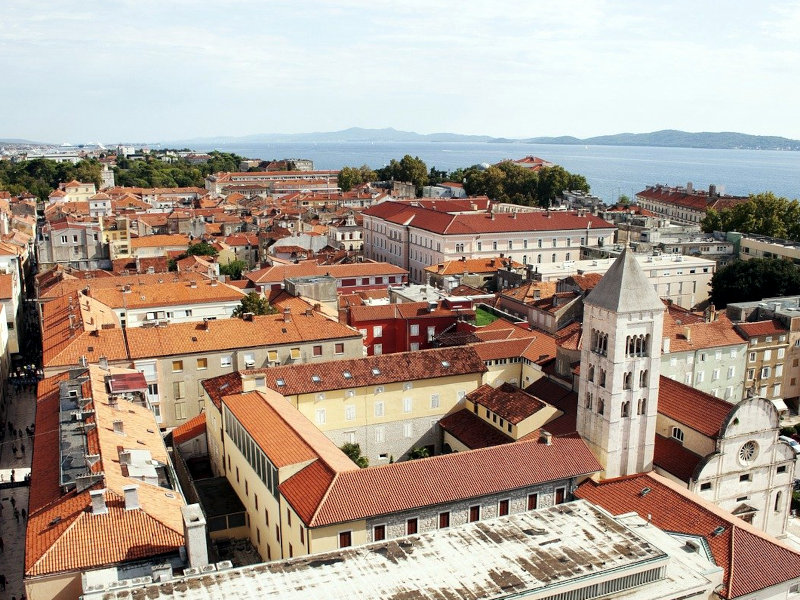
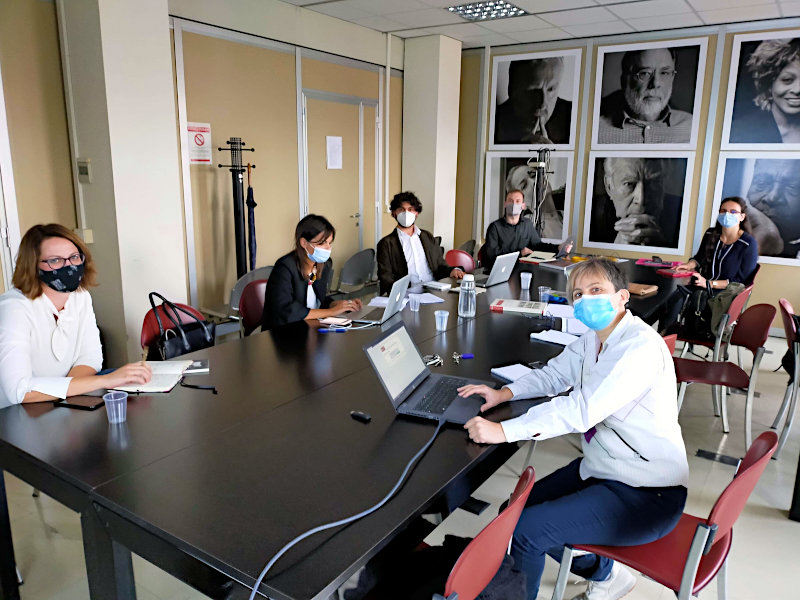
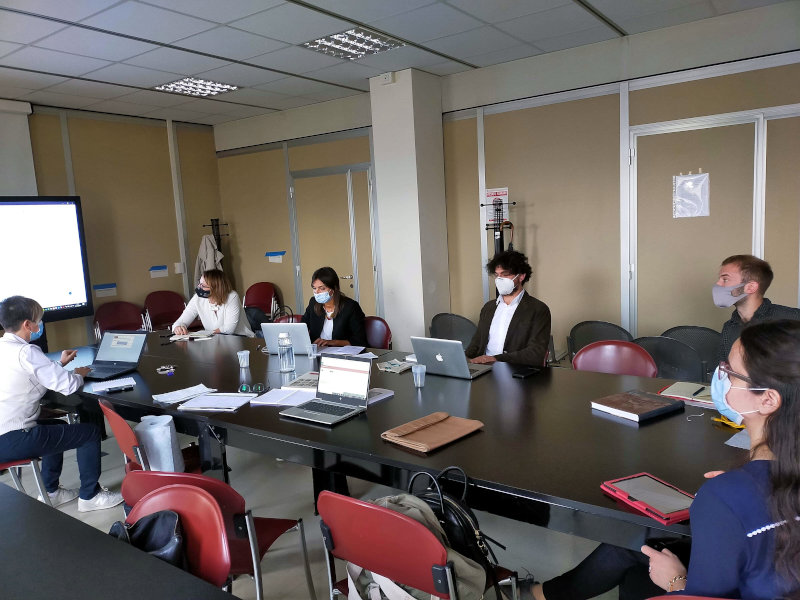








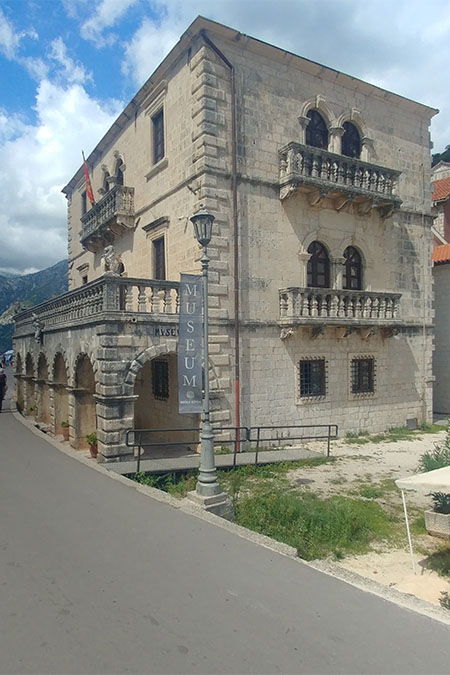
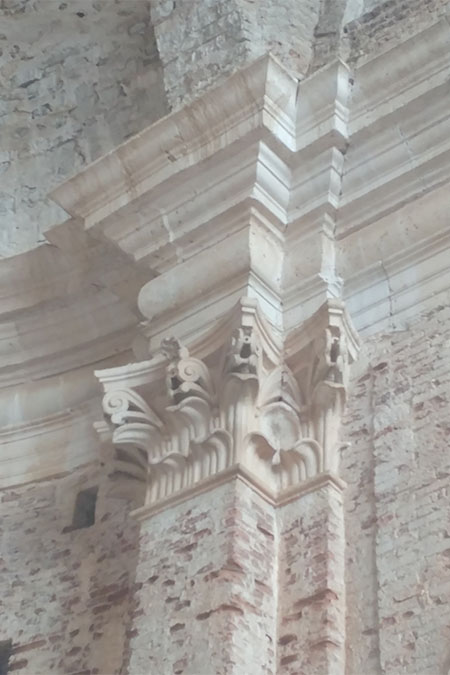
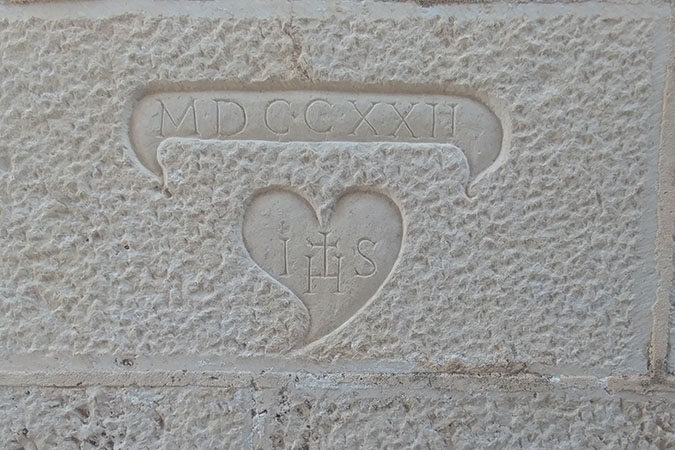
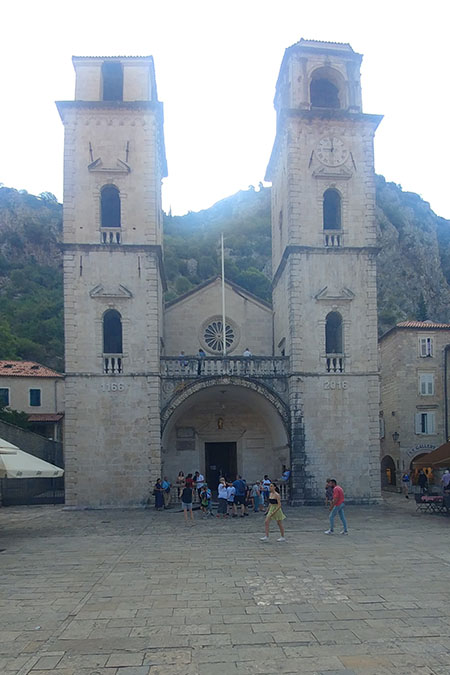
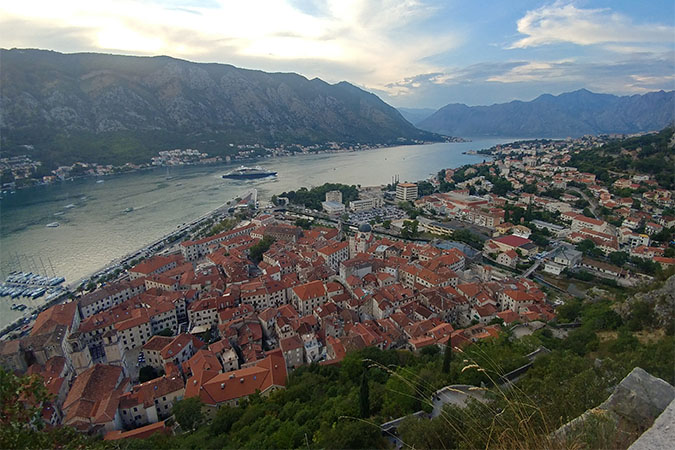
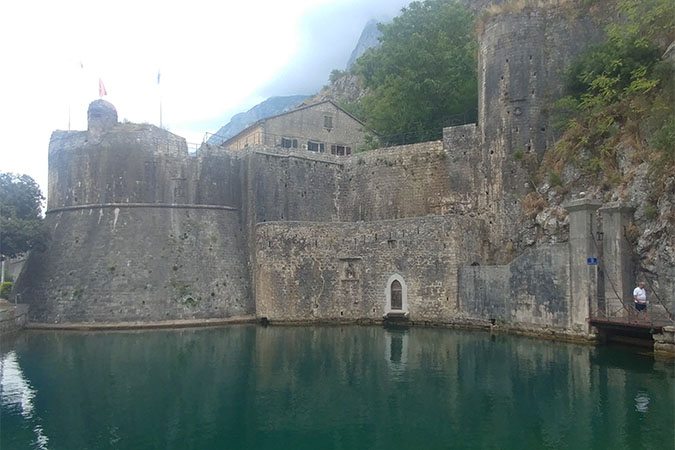
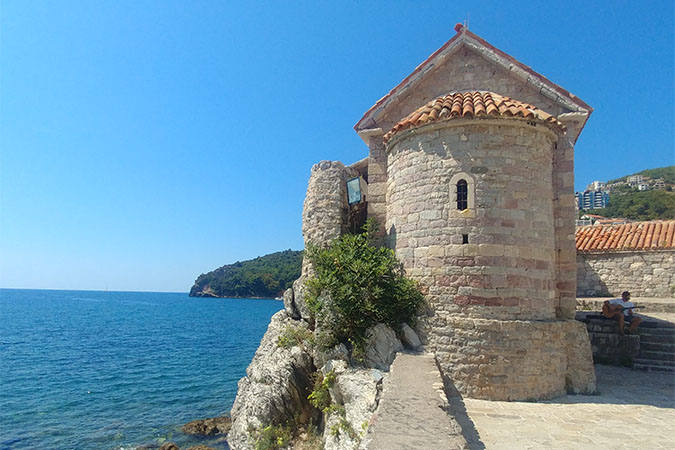
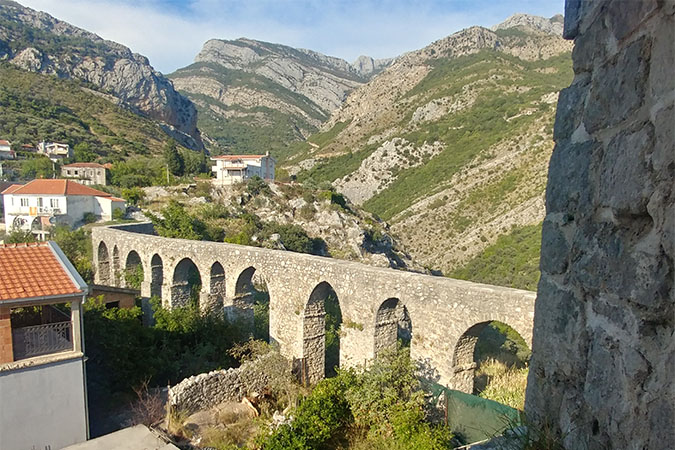
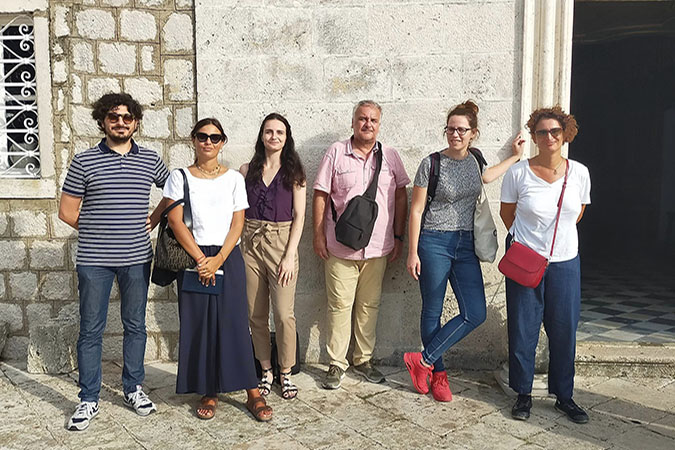
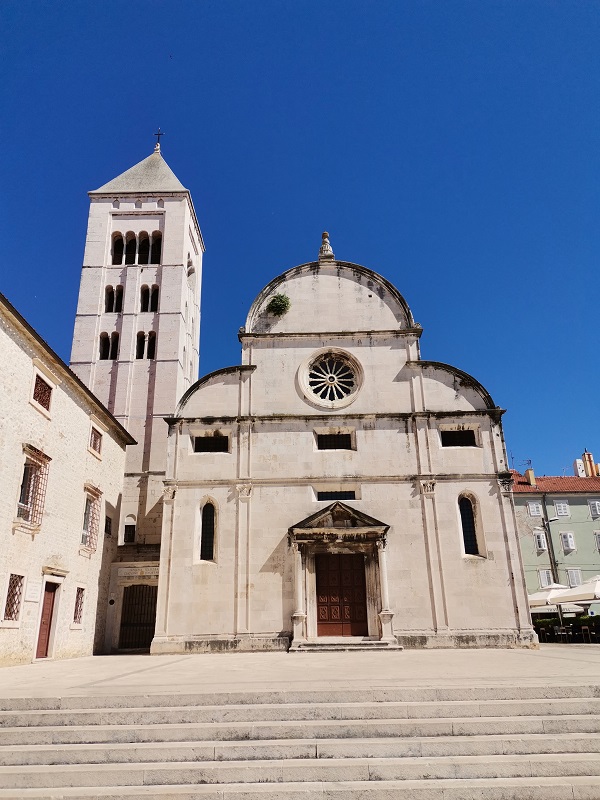
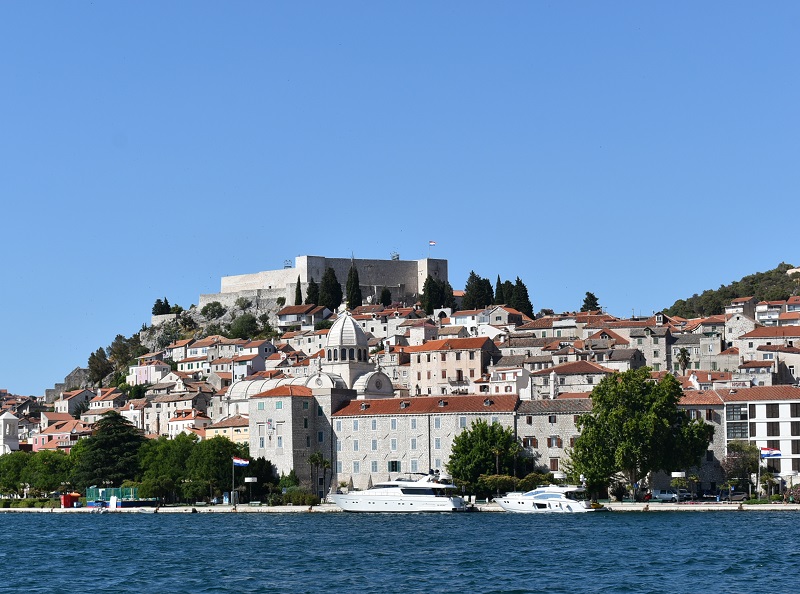
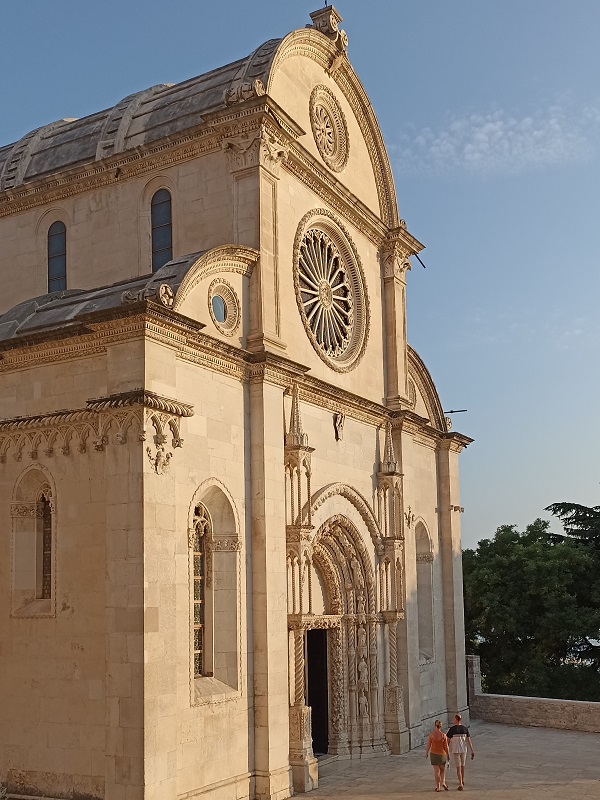
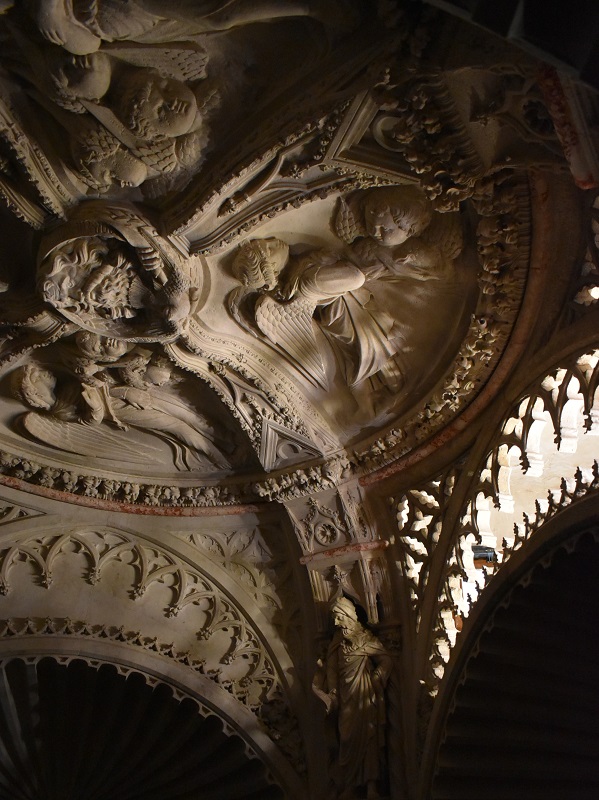
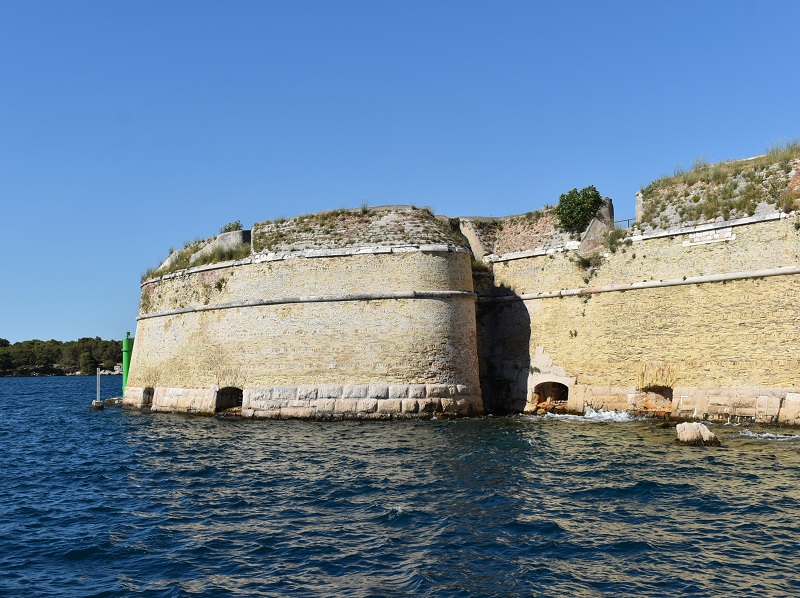
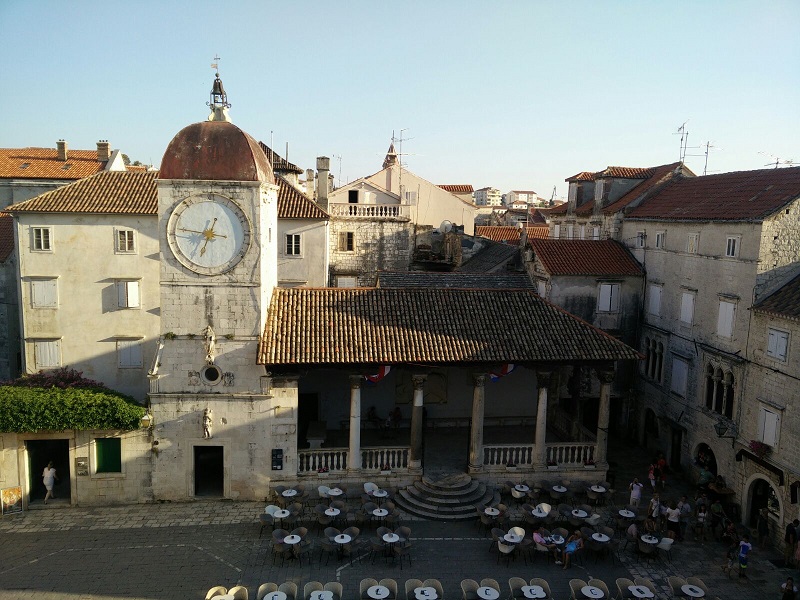

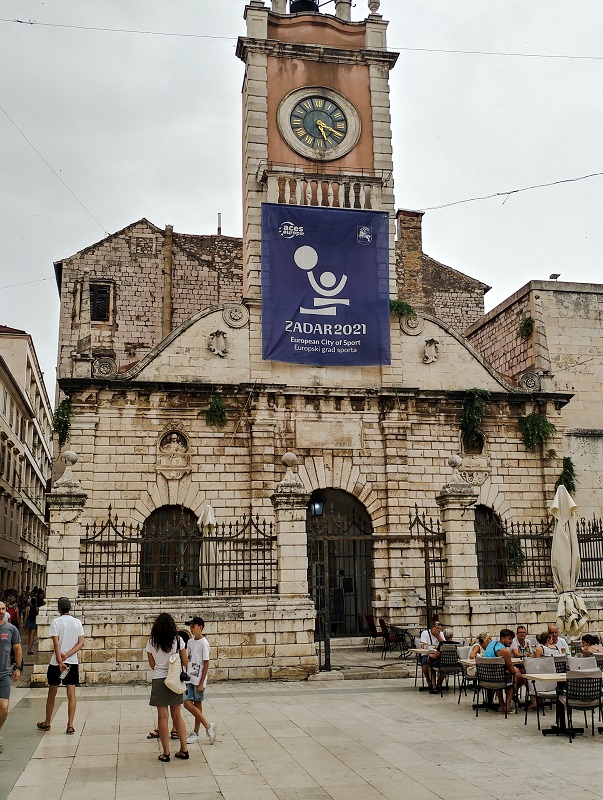
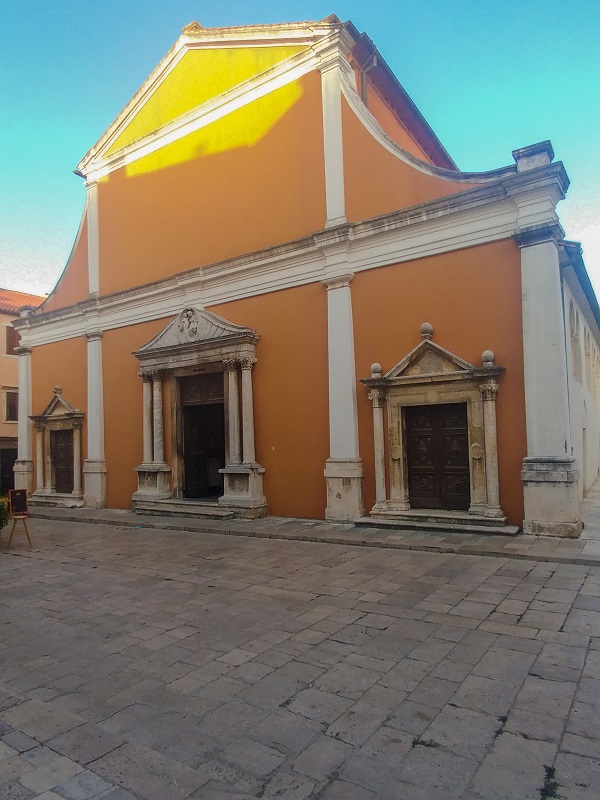
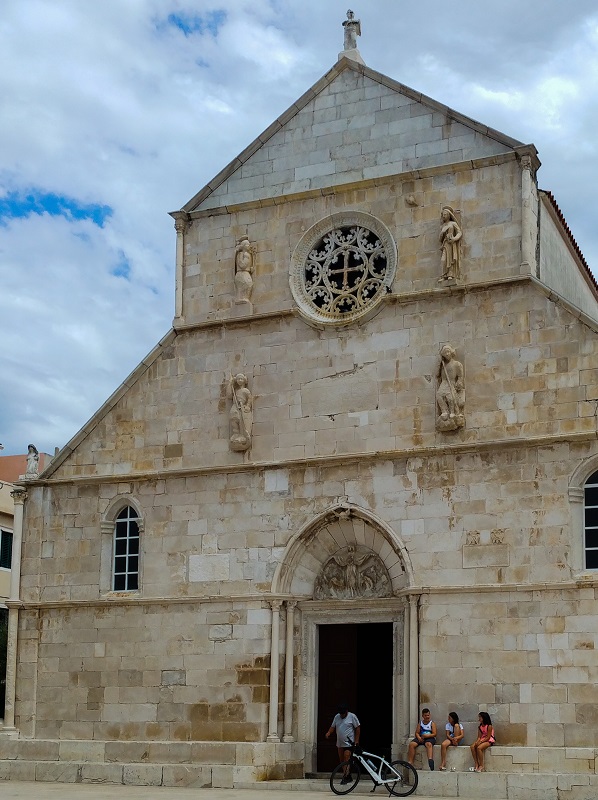
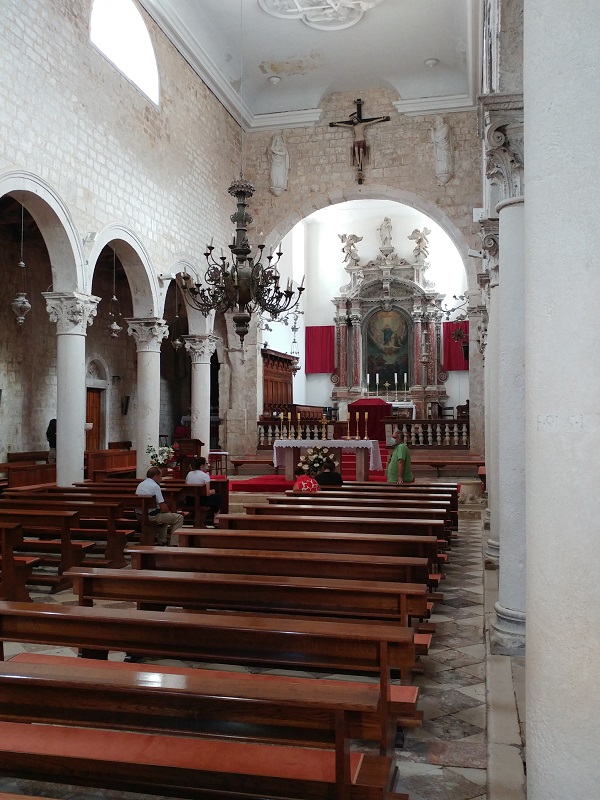


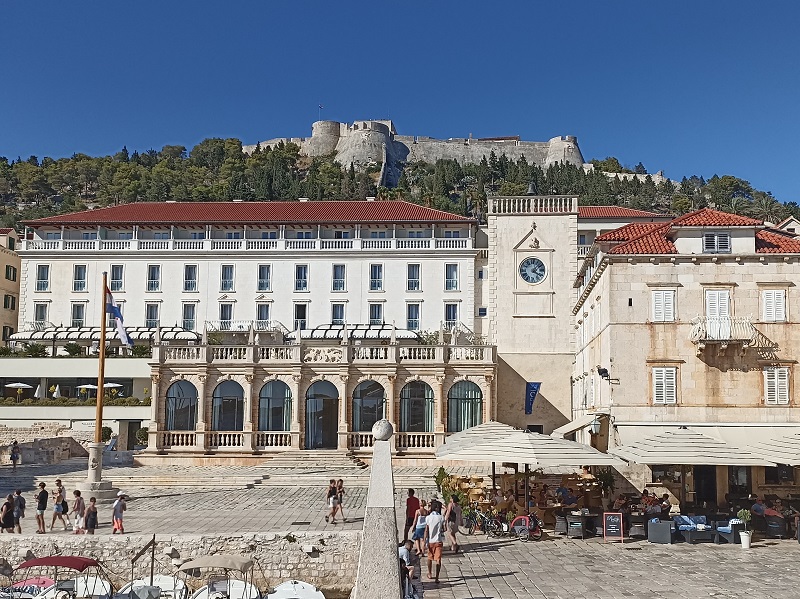


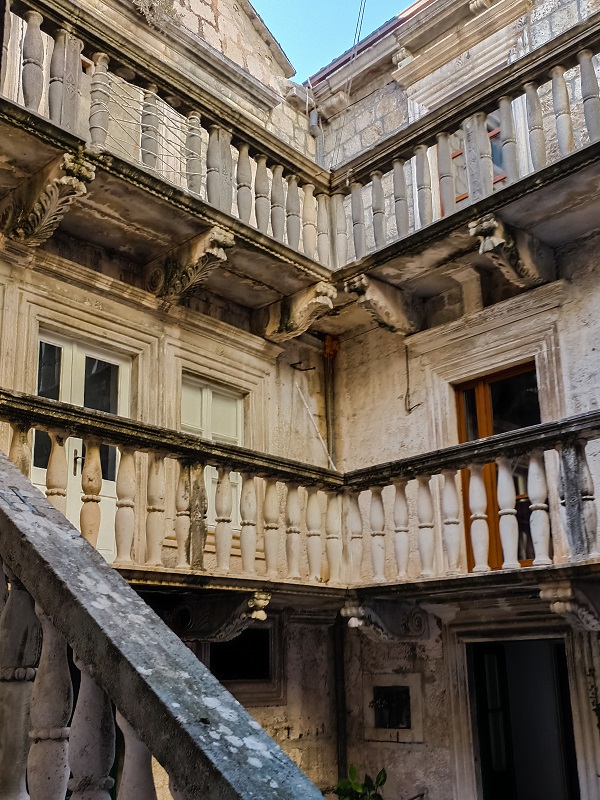
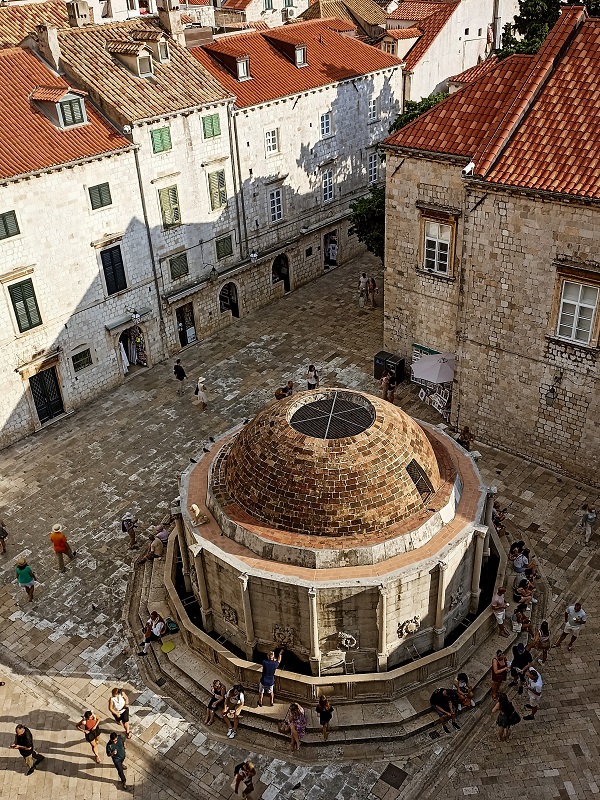


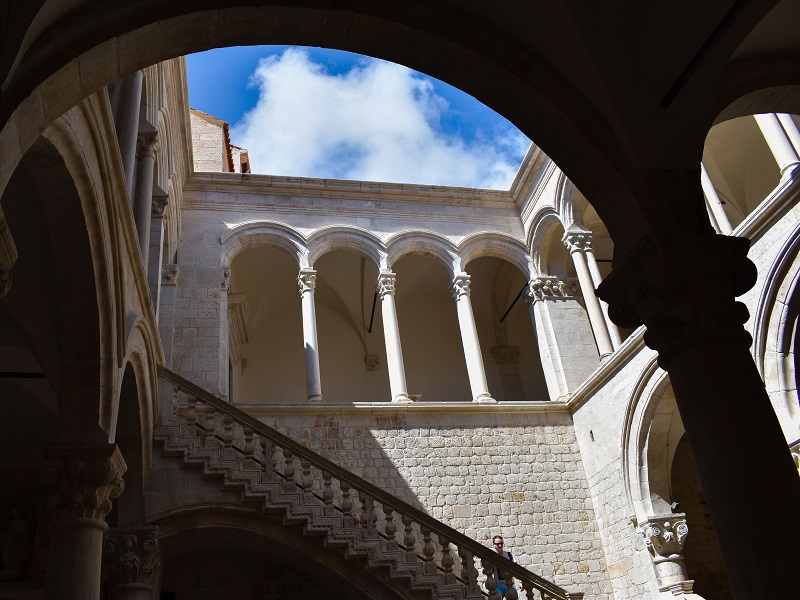
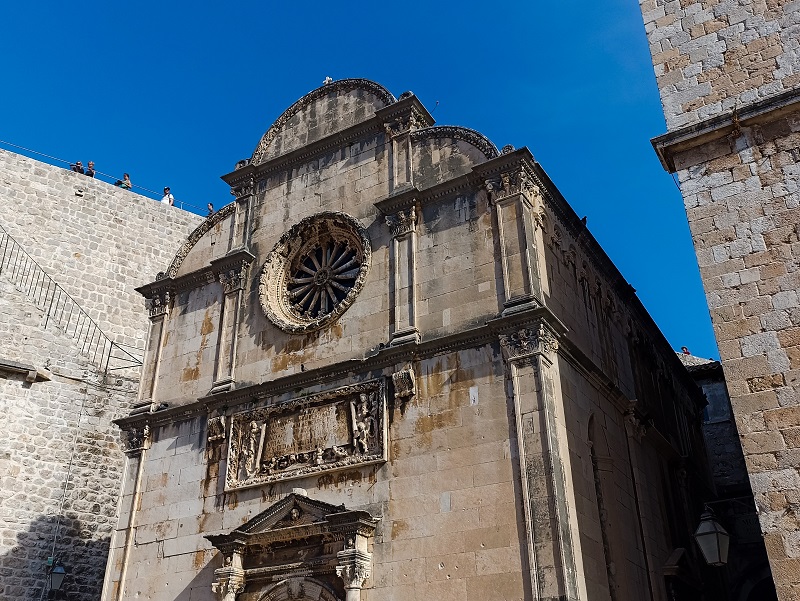
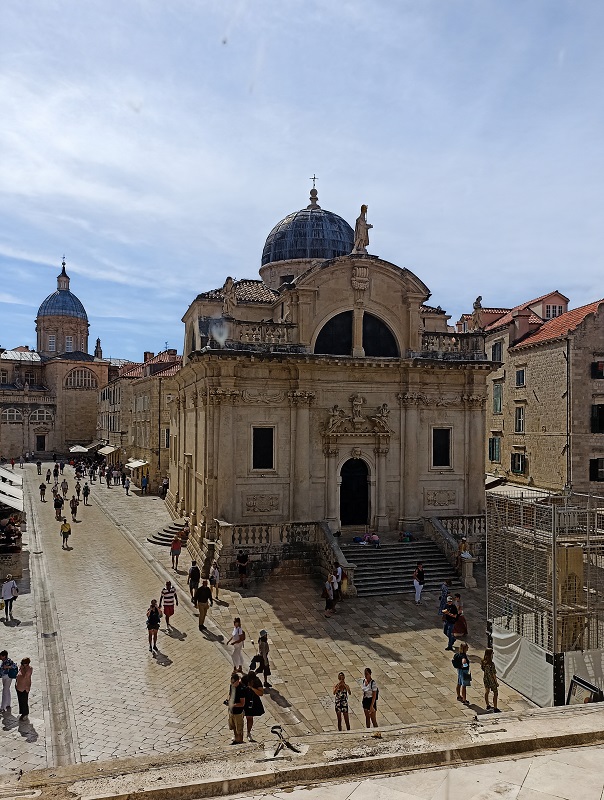
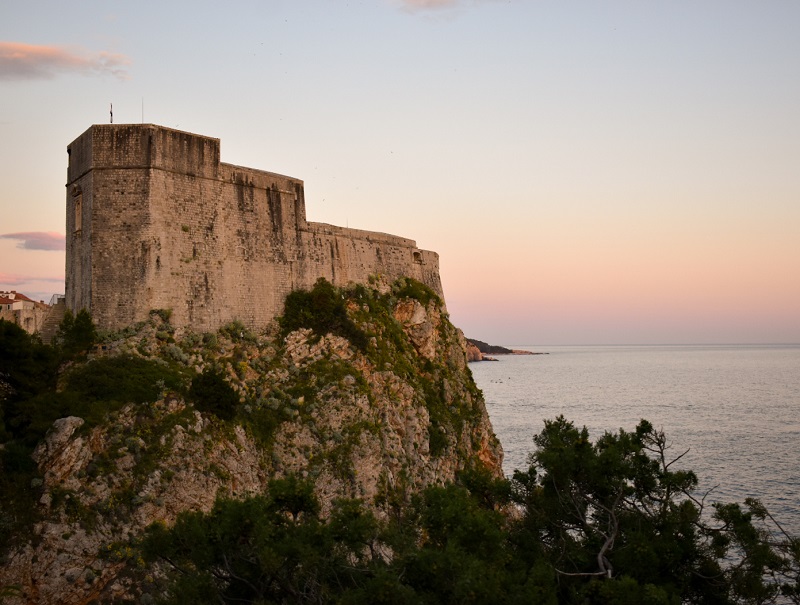
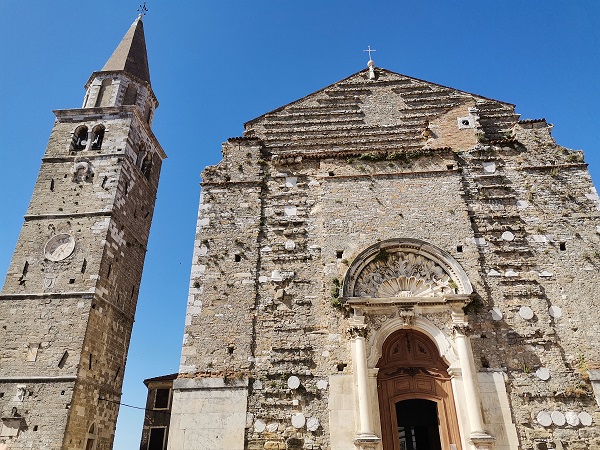


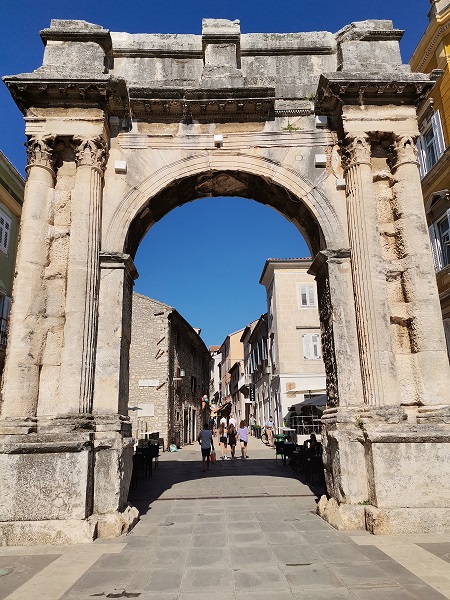
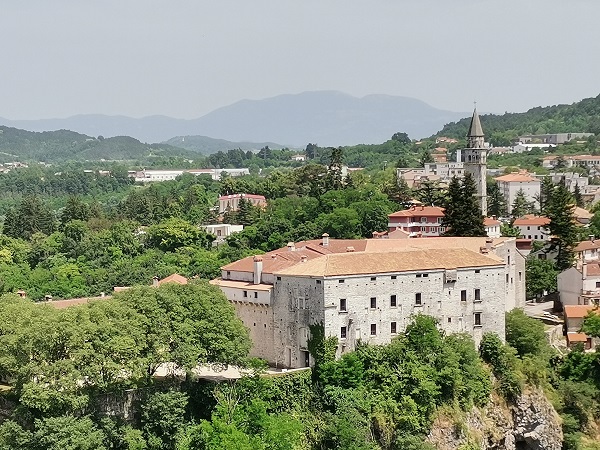
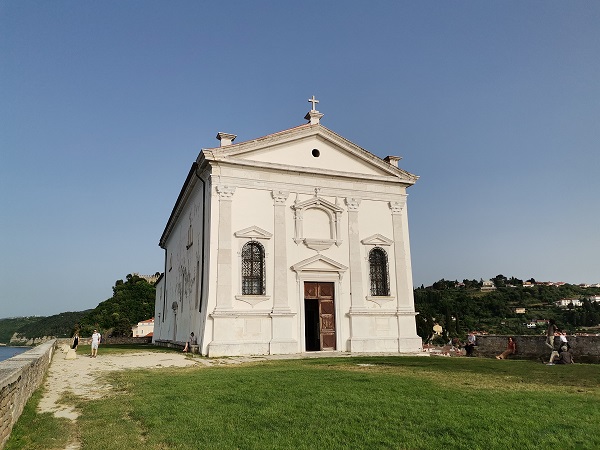
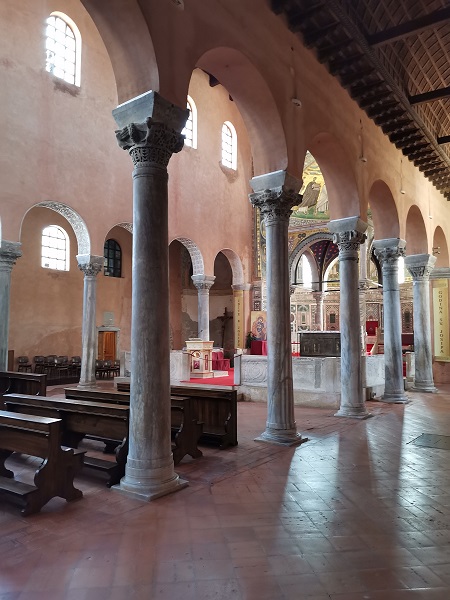
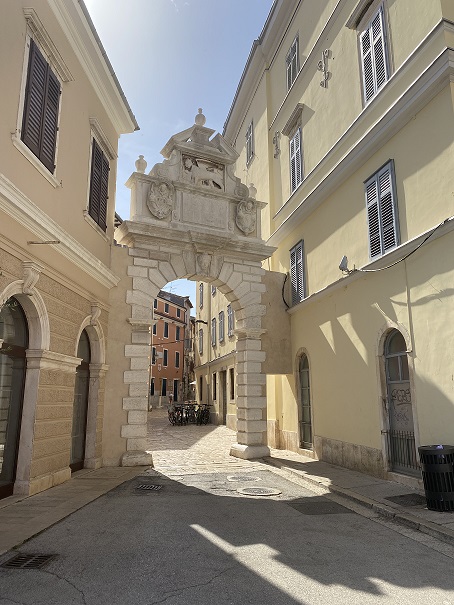
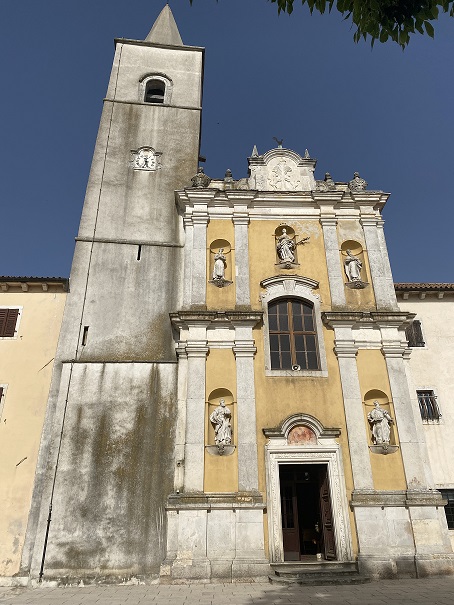
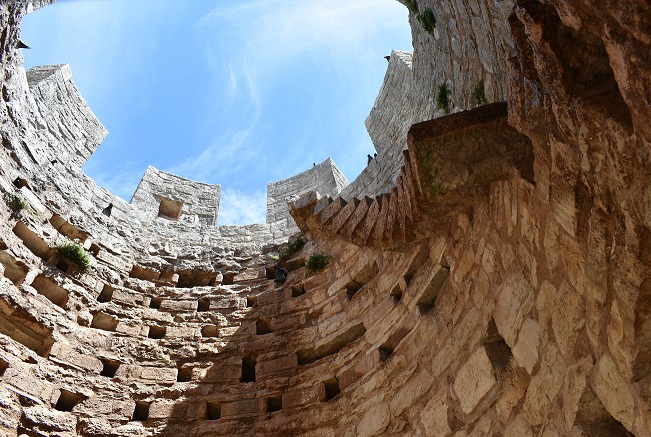

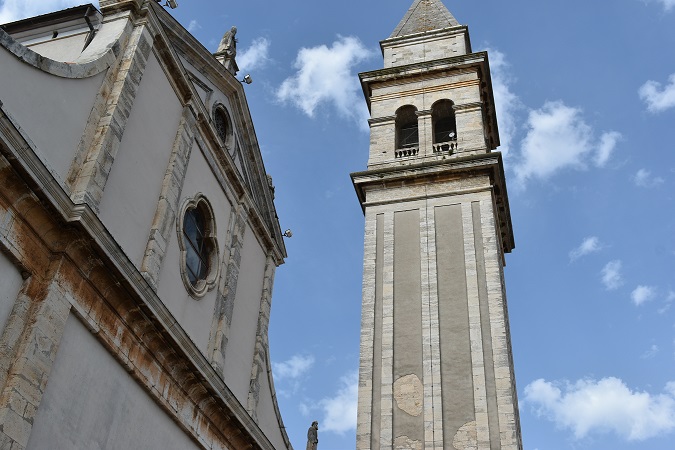
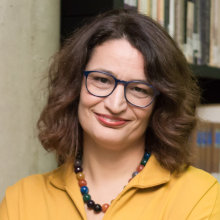
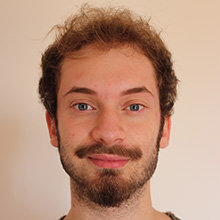
![Laris Borić [HRV] Laris Borić [HRV]](/fileadmin/user_upload/img/persone-no-unive/Boric-Laris.jpg)
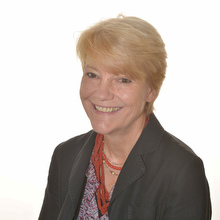
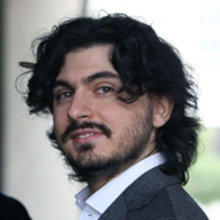
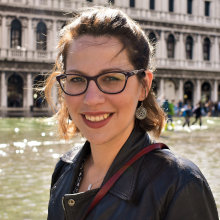
![Neven Jovanović [HRV] Neven Jovanović [HRV]](/fileadmin/user_upload/img/persone-no-unive/Jovanovic-Neven.jpg)
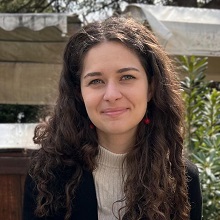
![Ana Marinković [HRV] Ana Marinković [HRV]](/fileadmin/user_upload/img/persone-no-unive/Marinkovic-Ana.jpg)
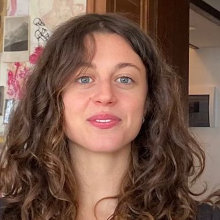

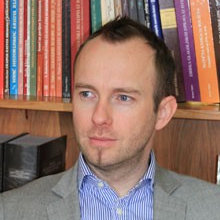
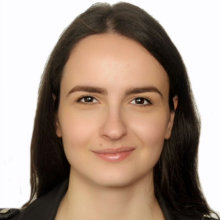
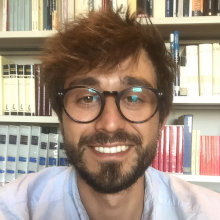
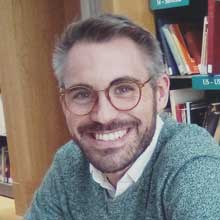
![Helena Seražin [SVN] Helena Seražin [SVN]](/fileadmin/user_upload/AdriArchCult/img/Serazin.jpg)
